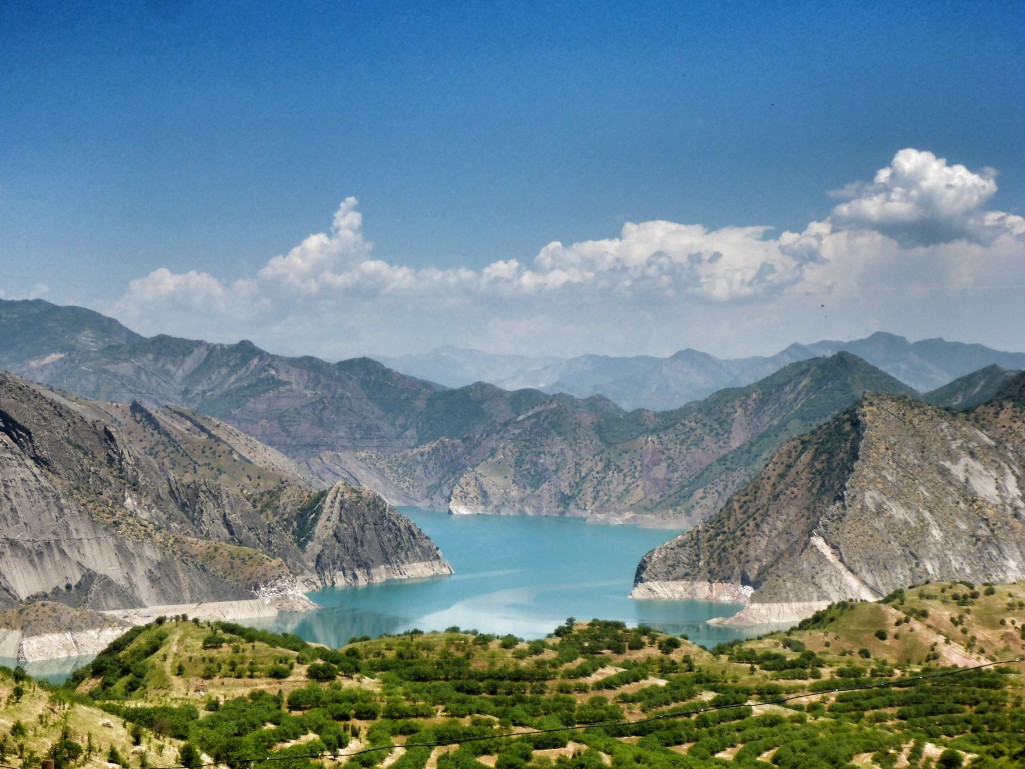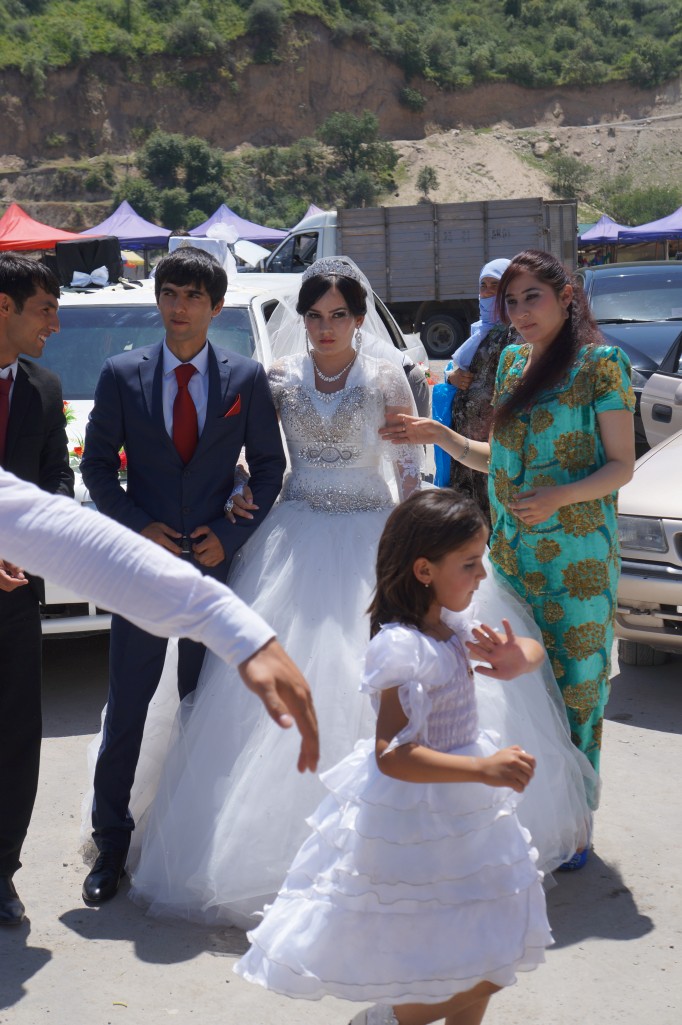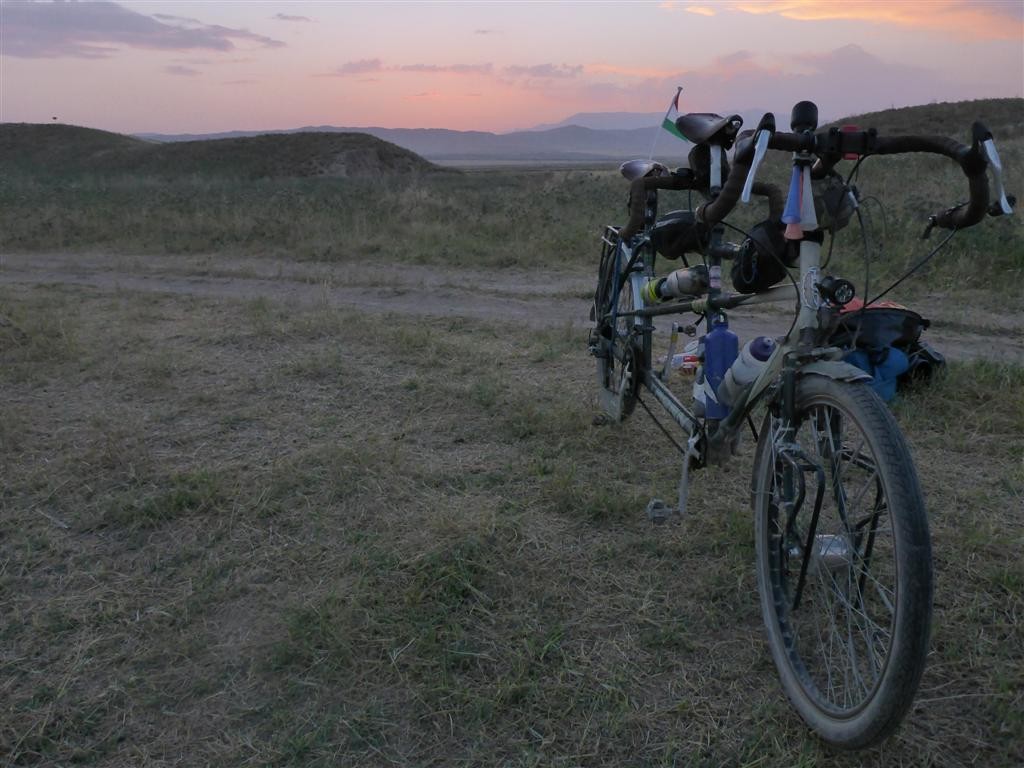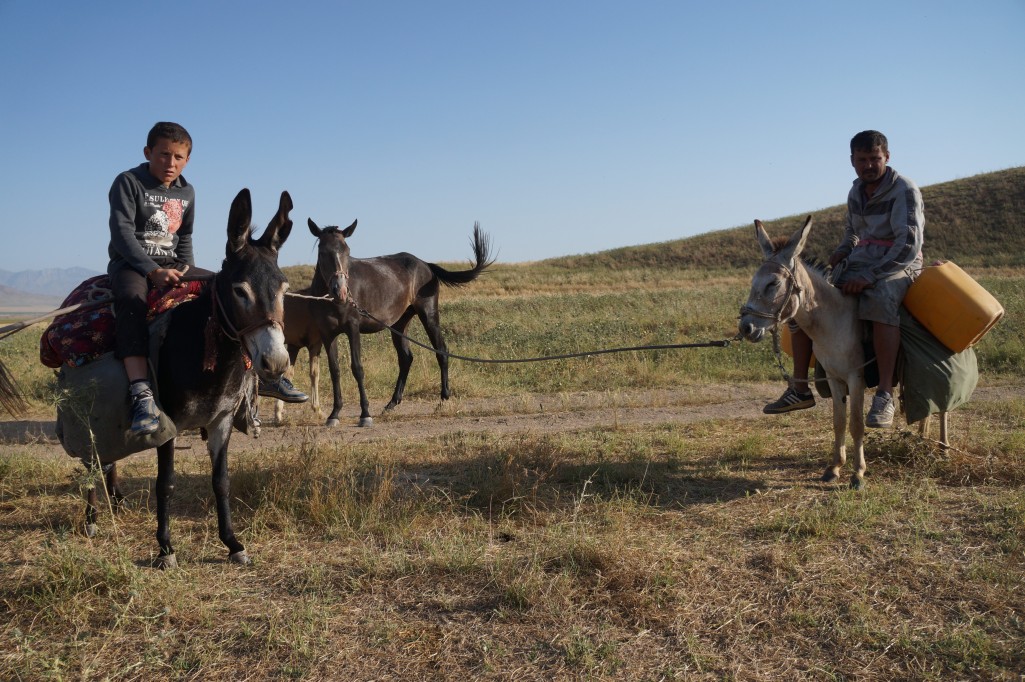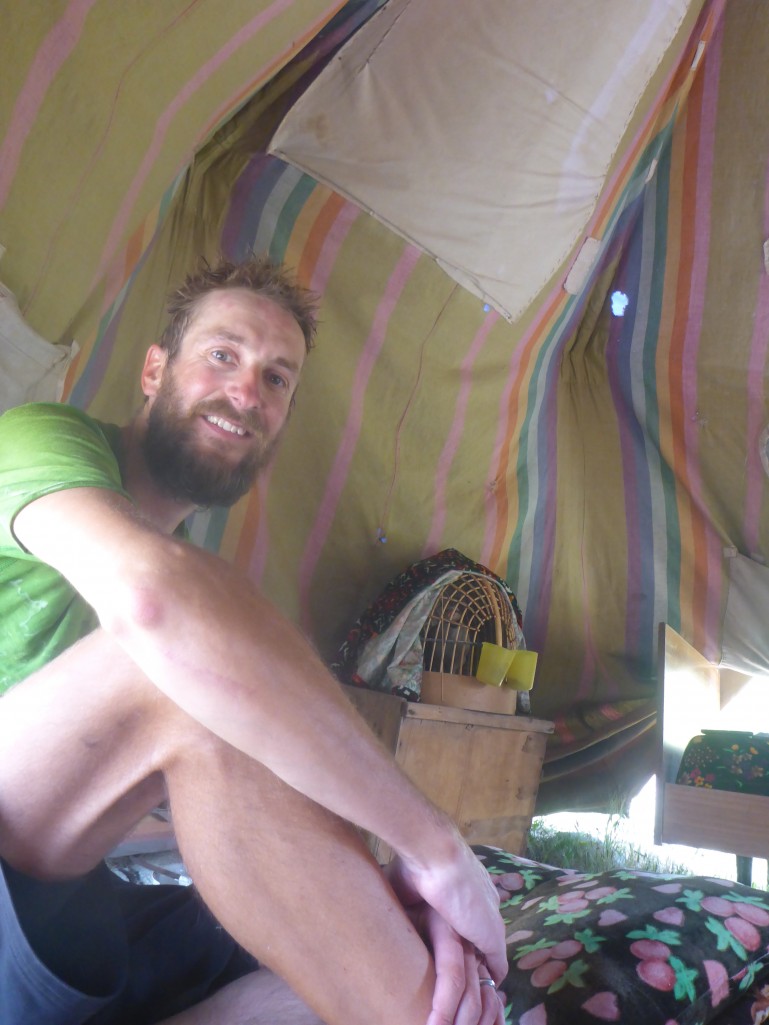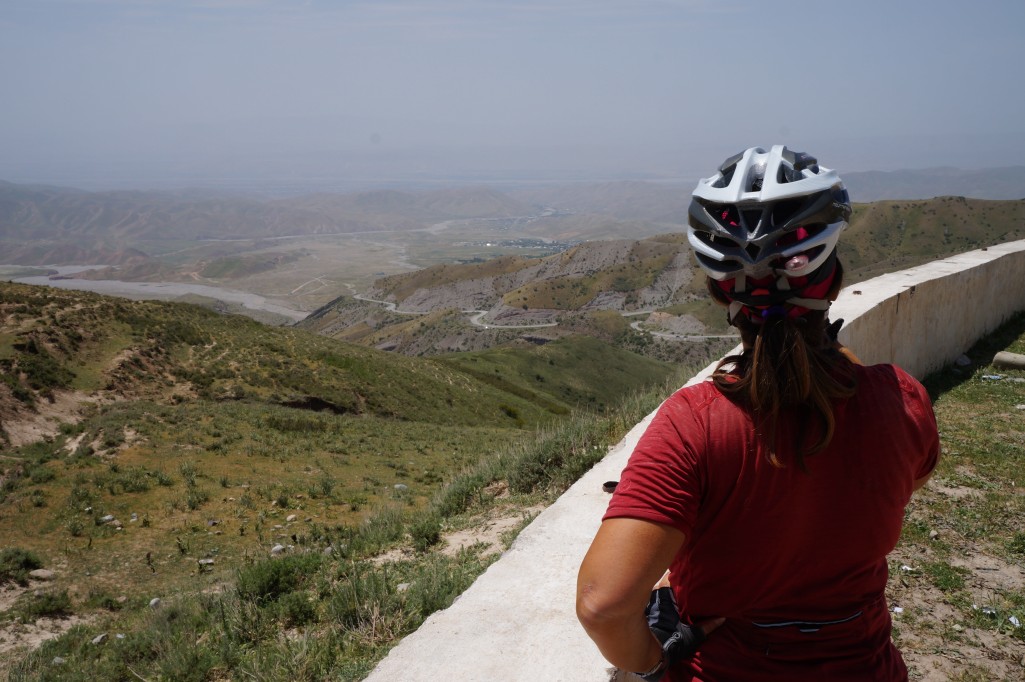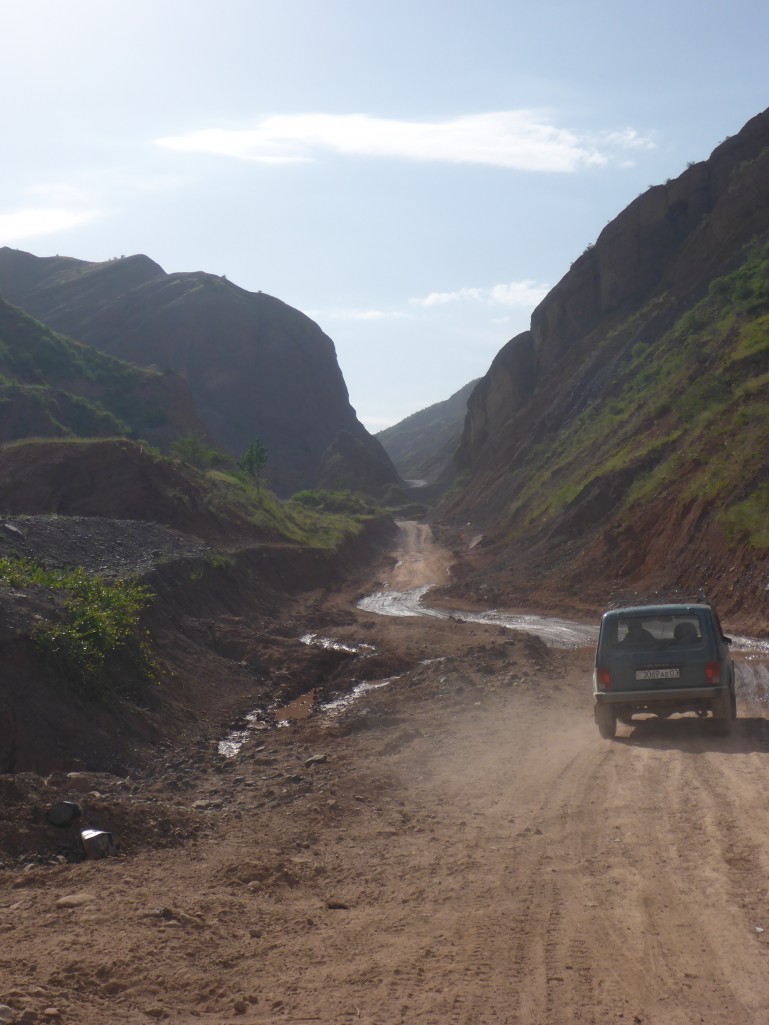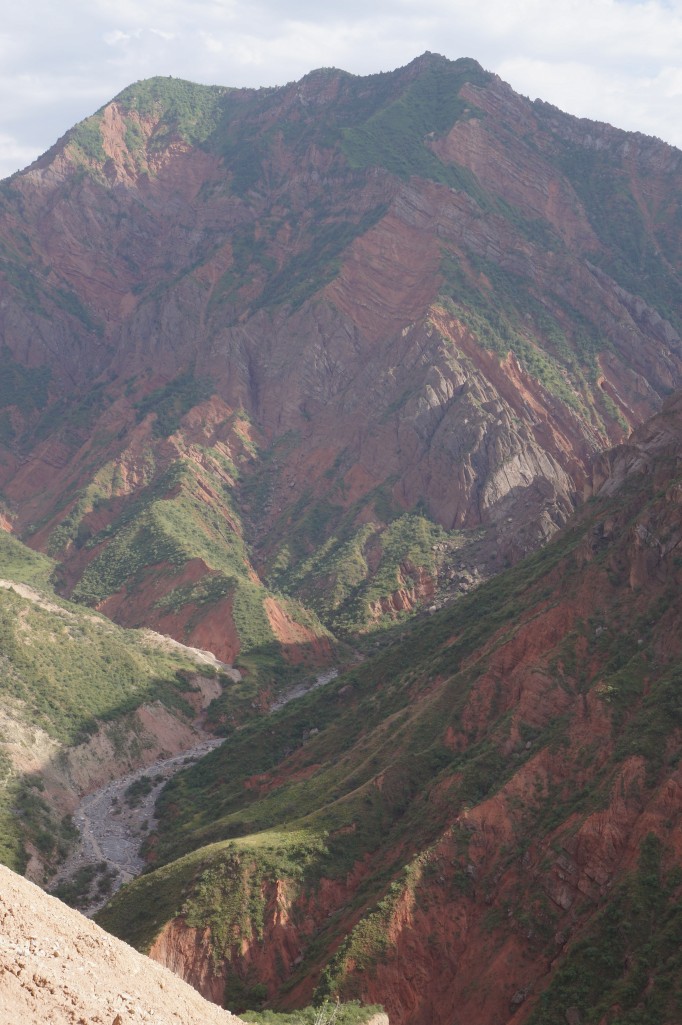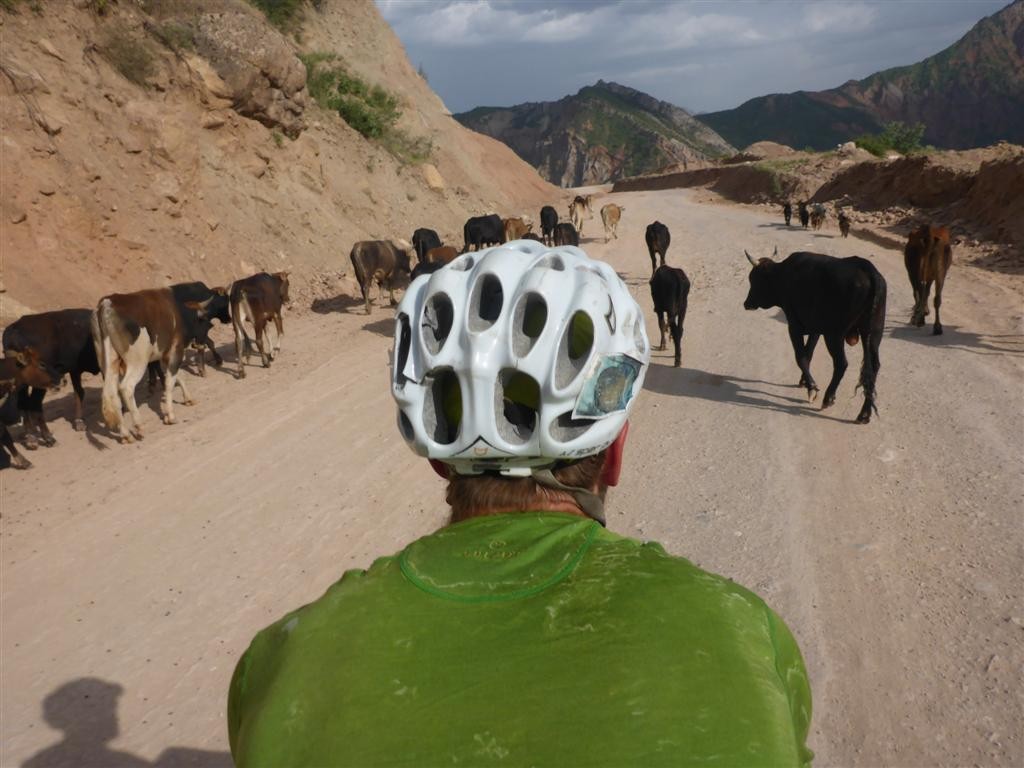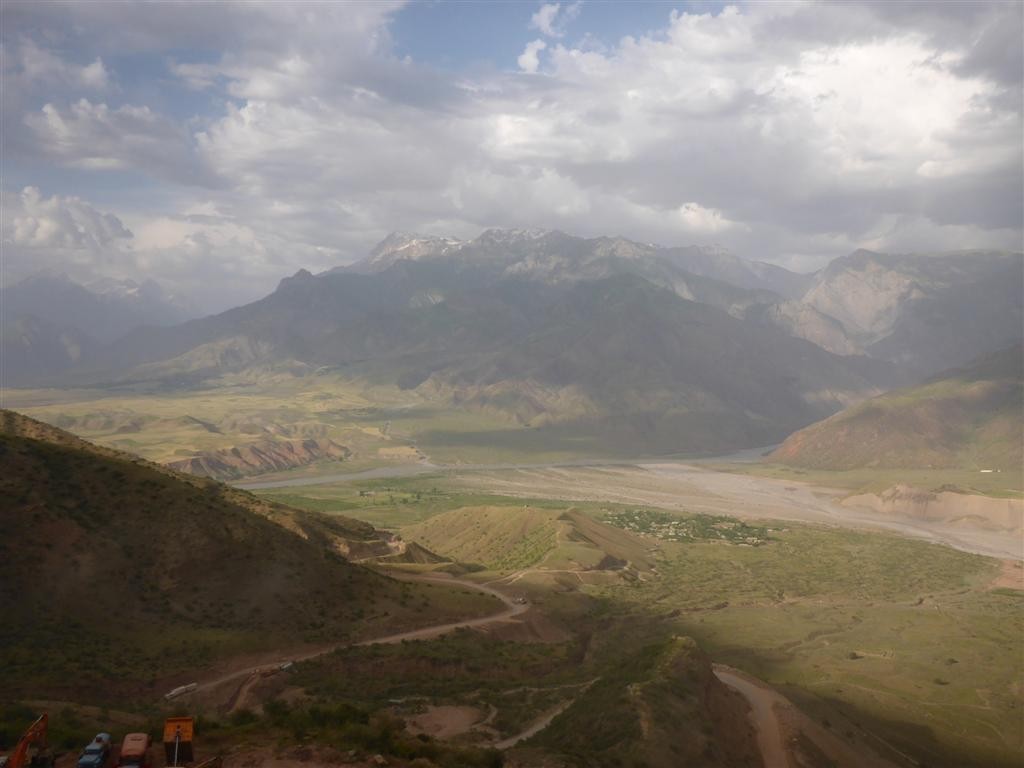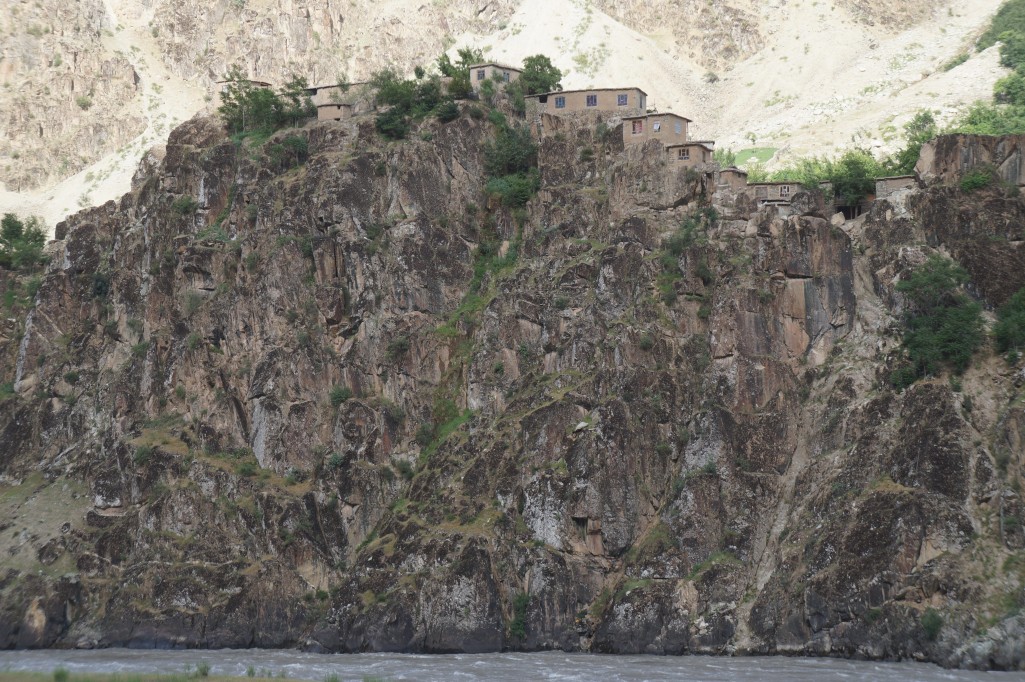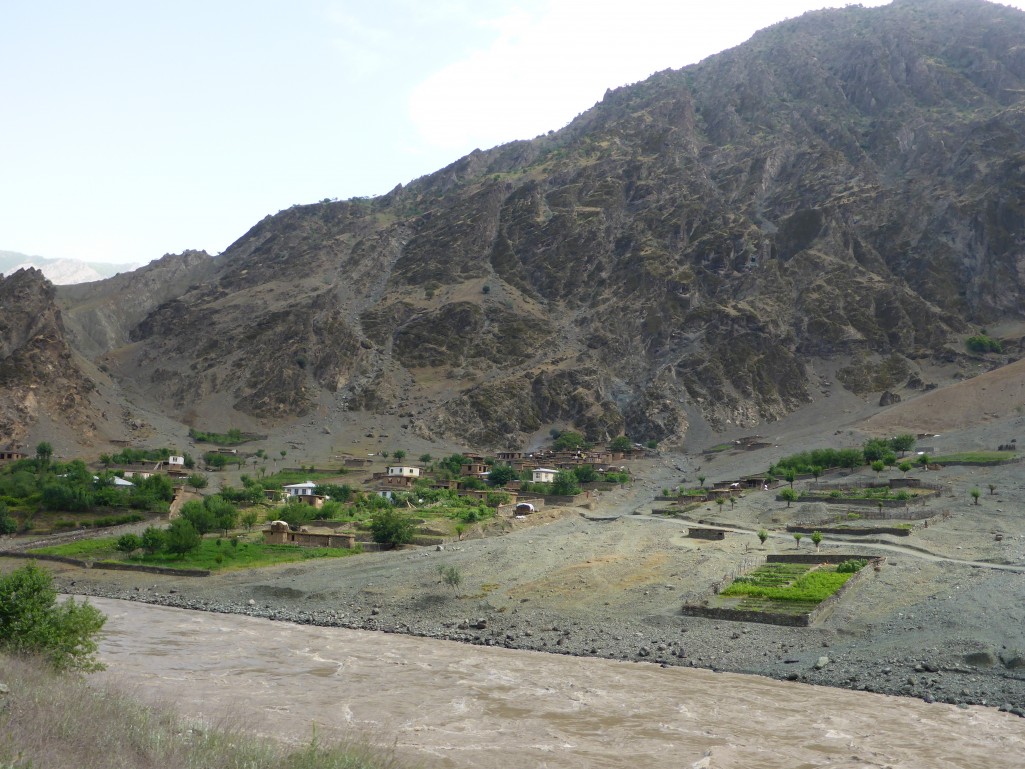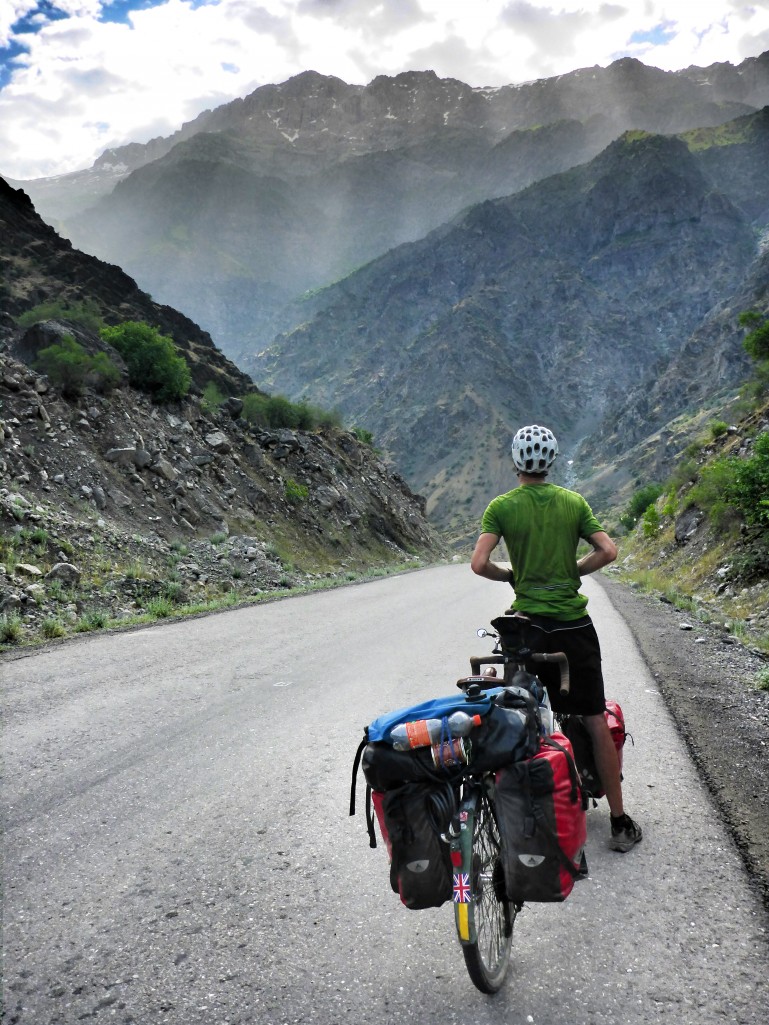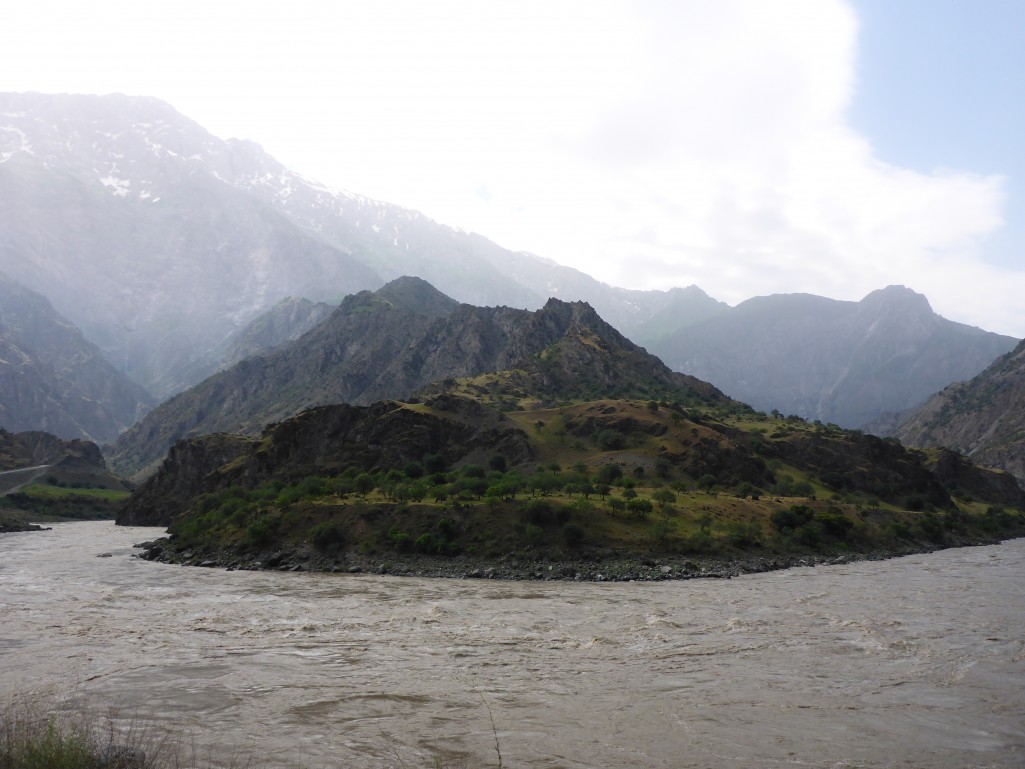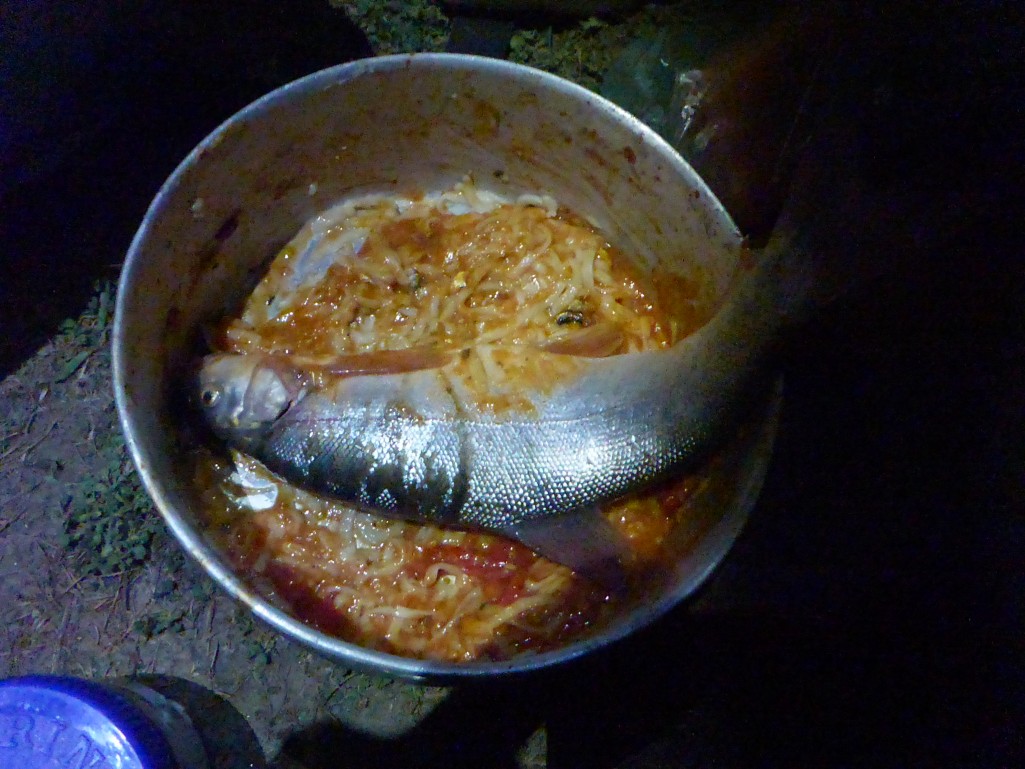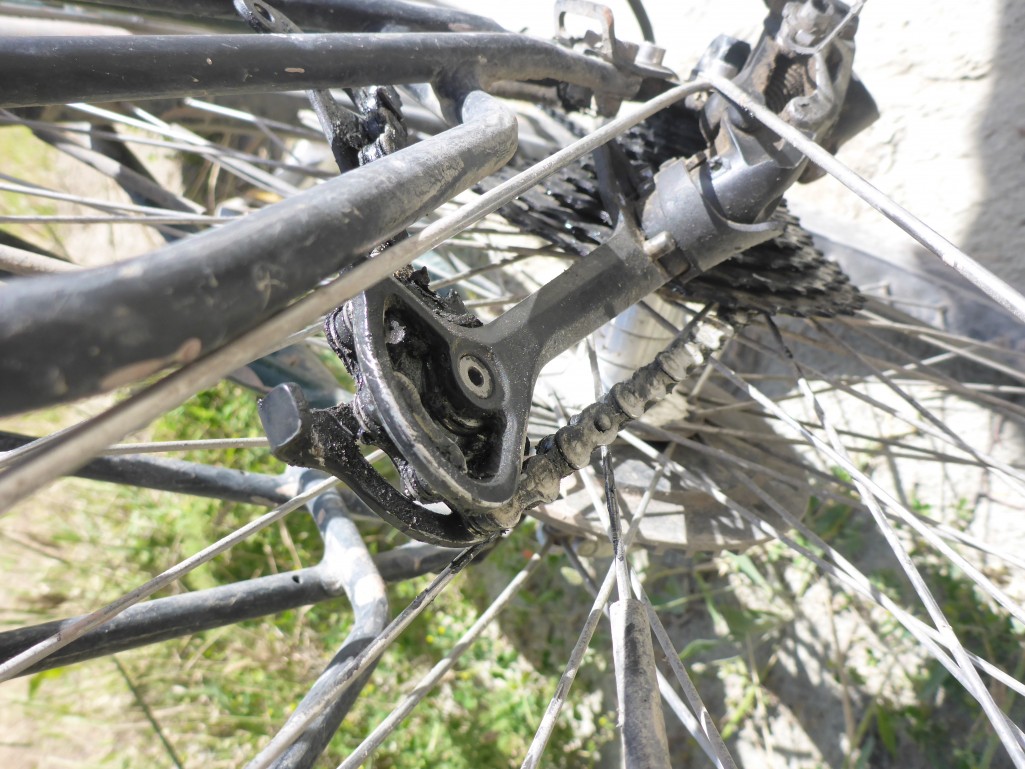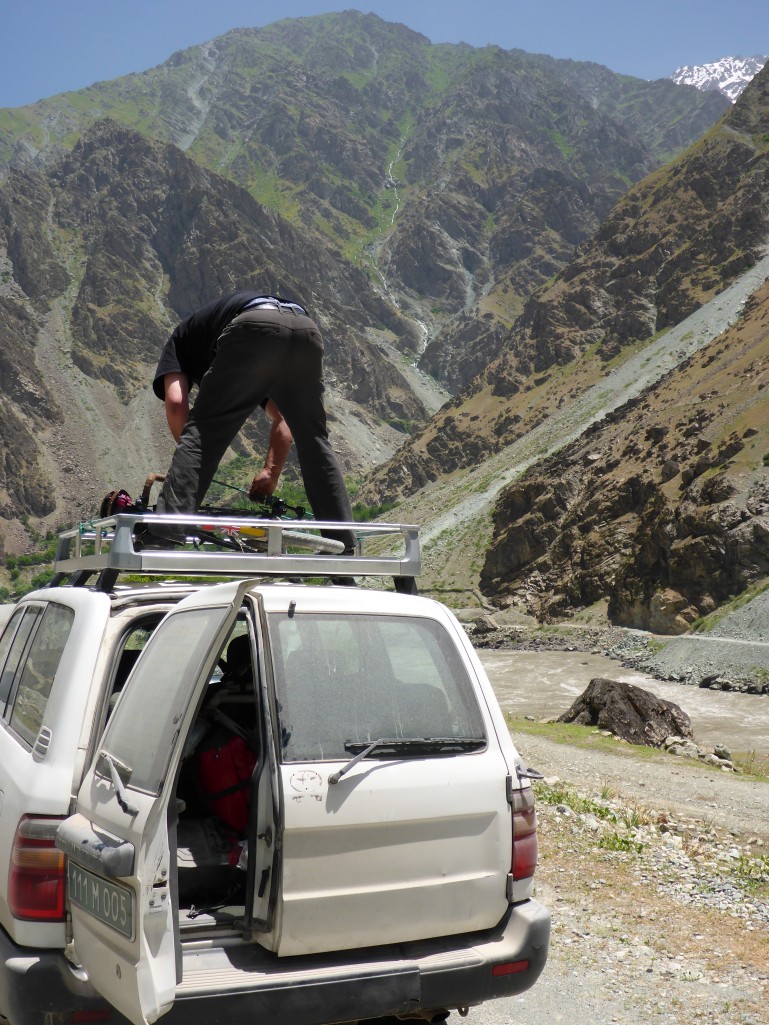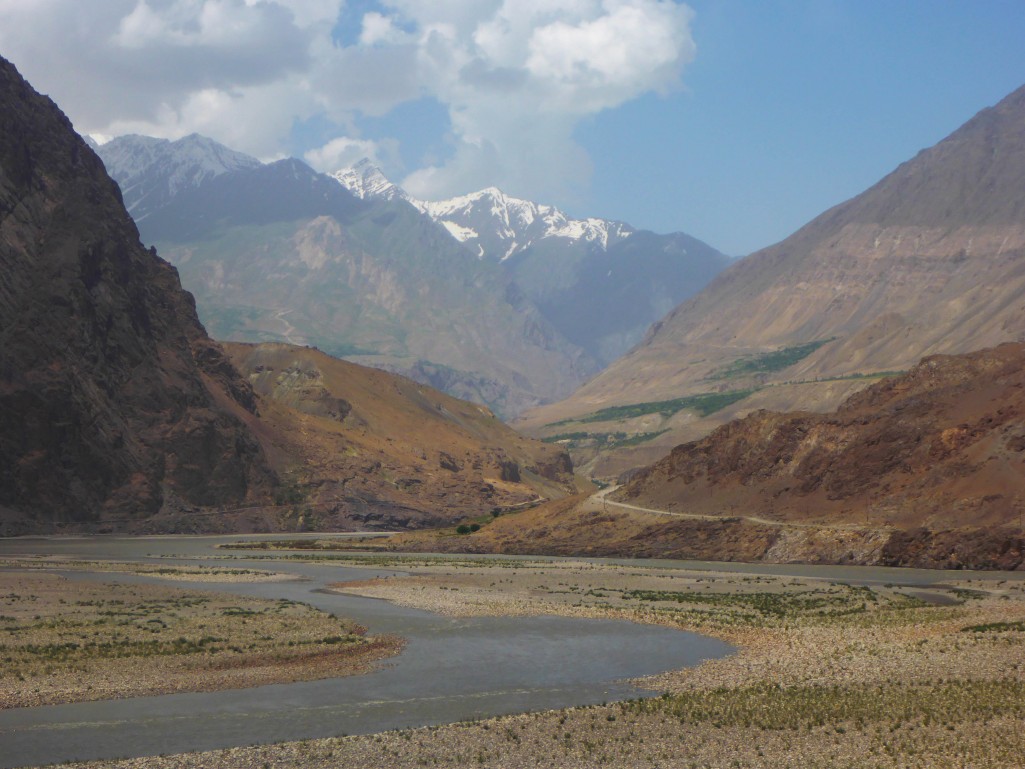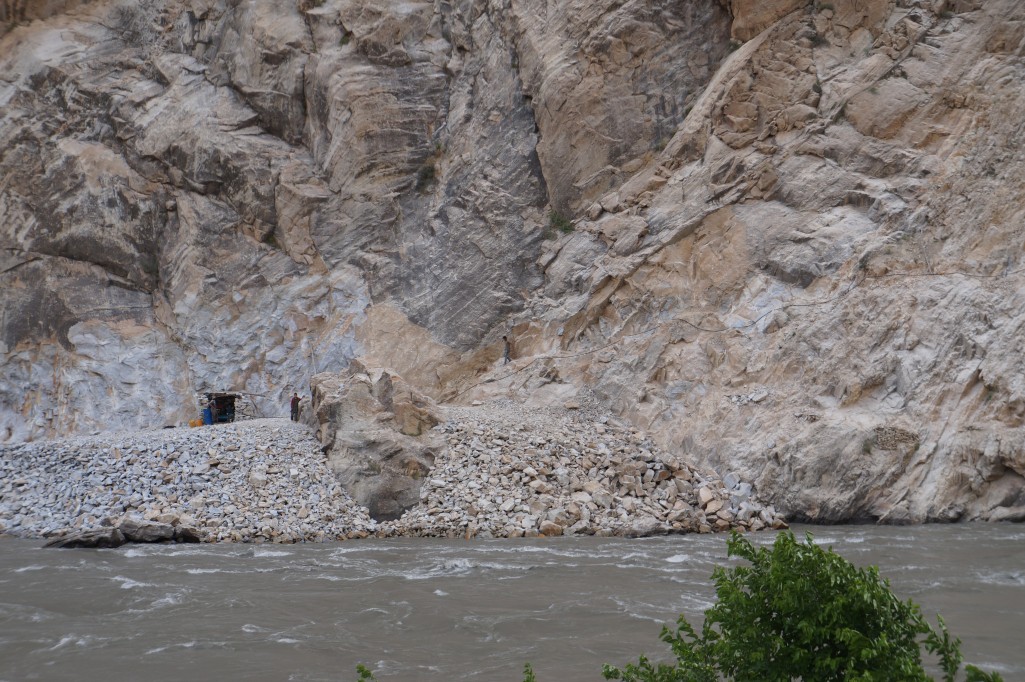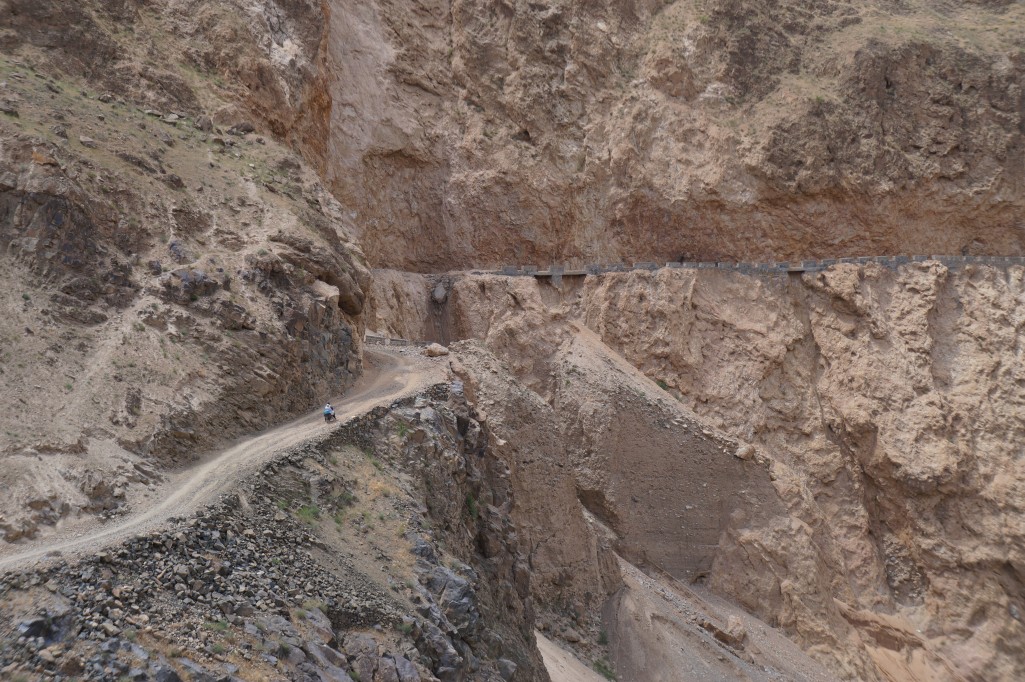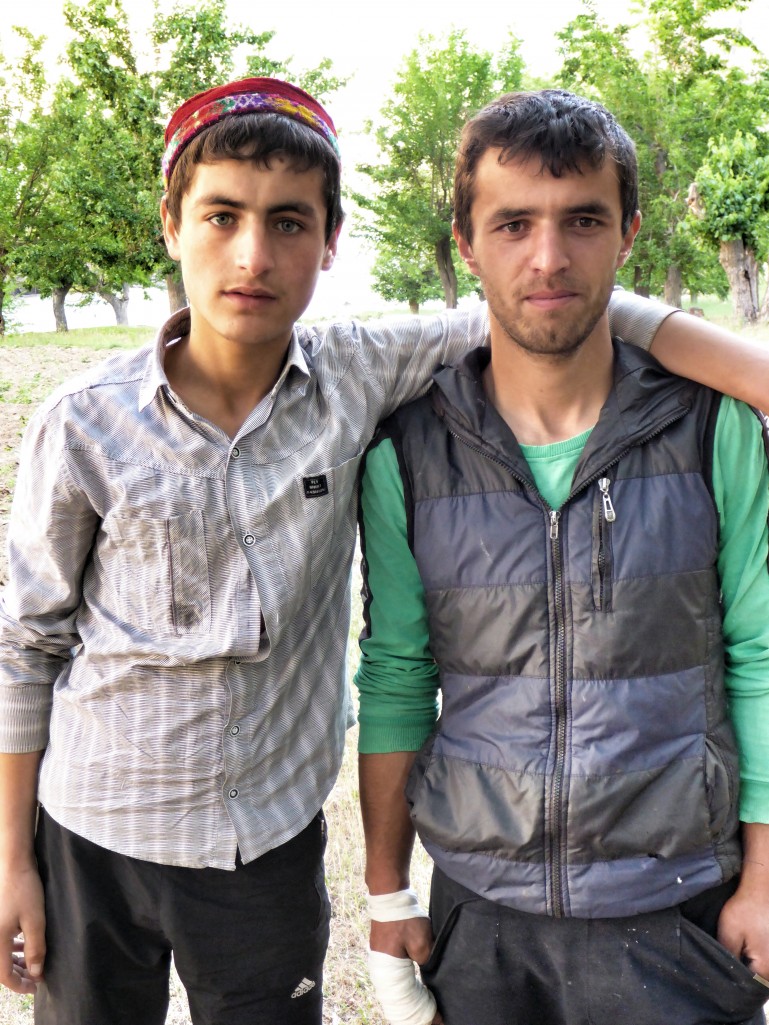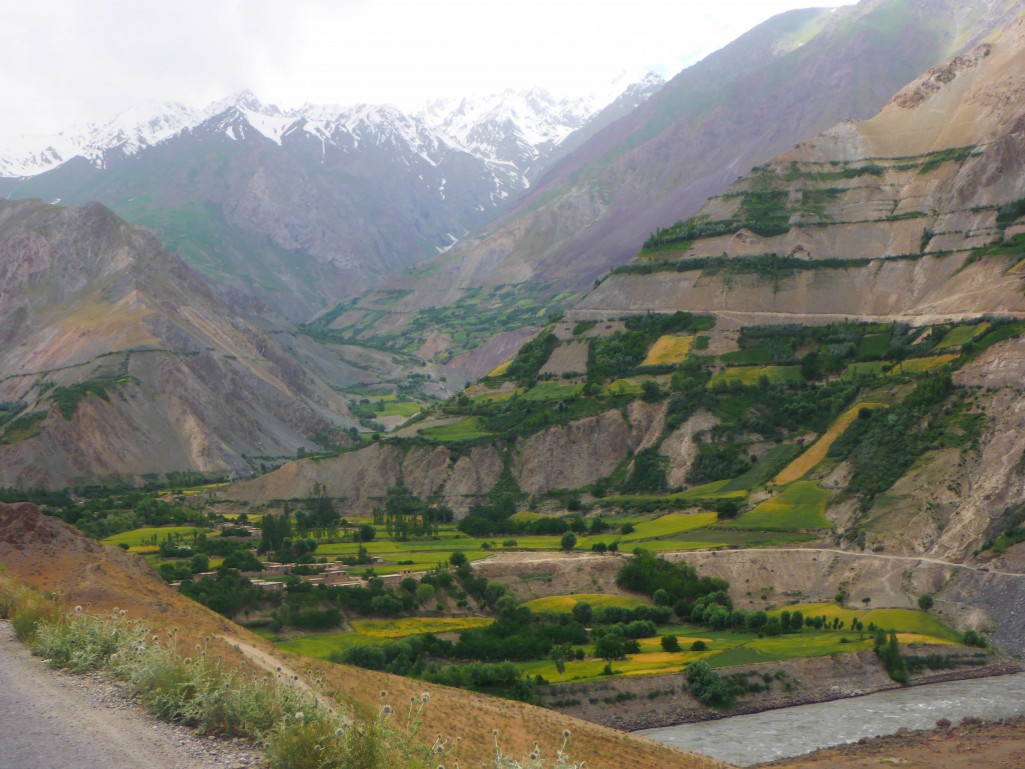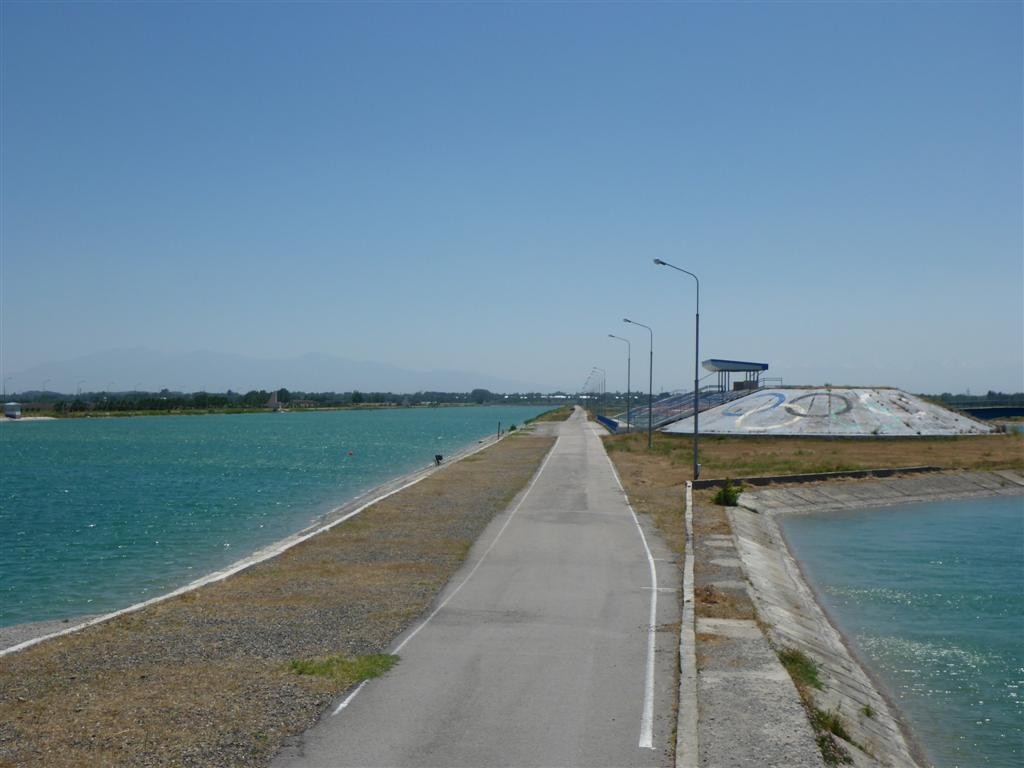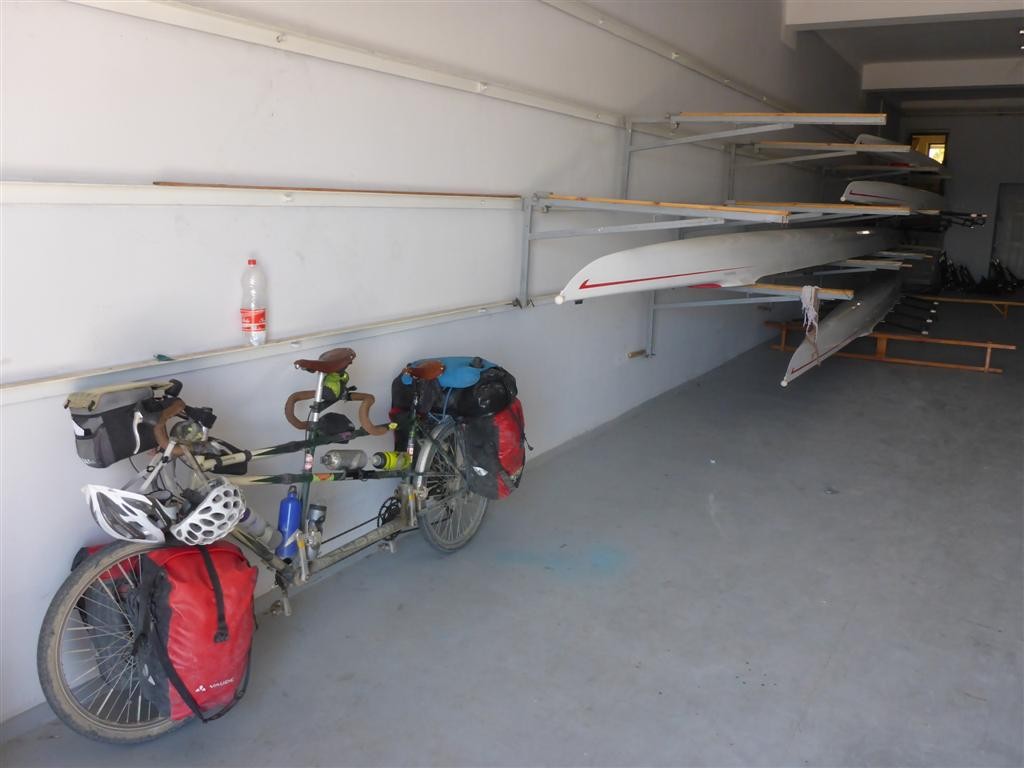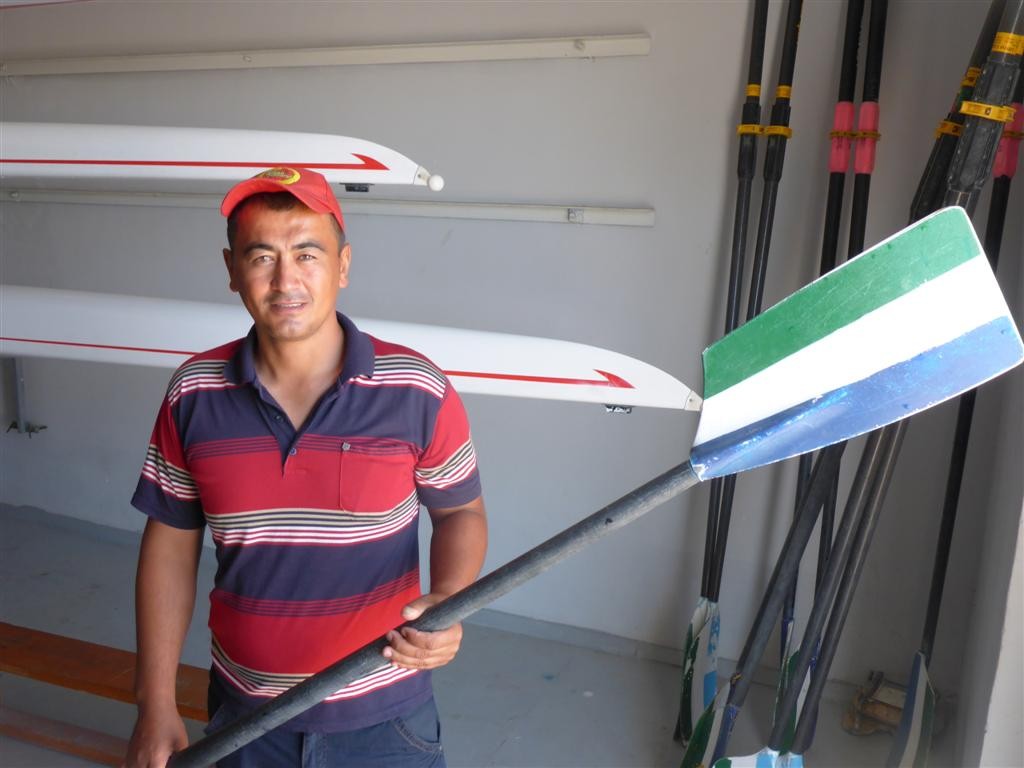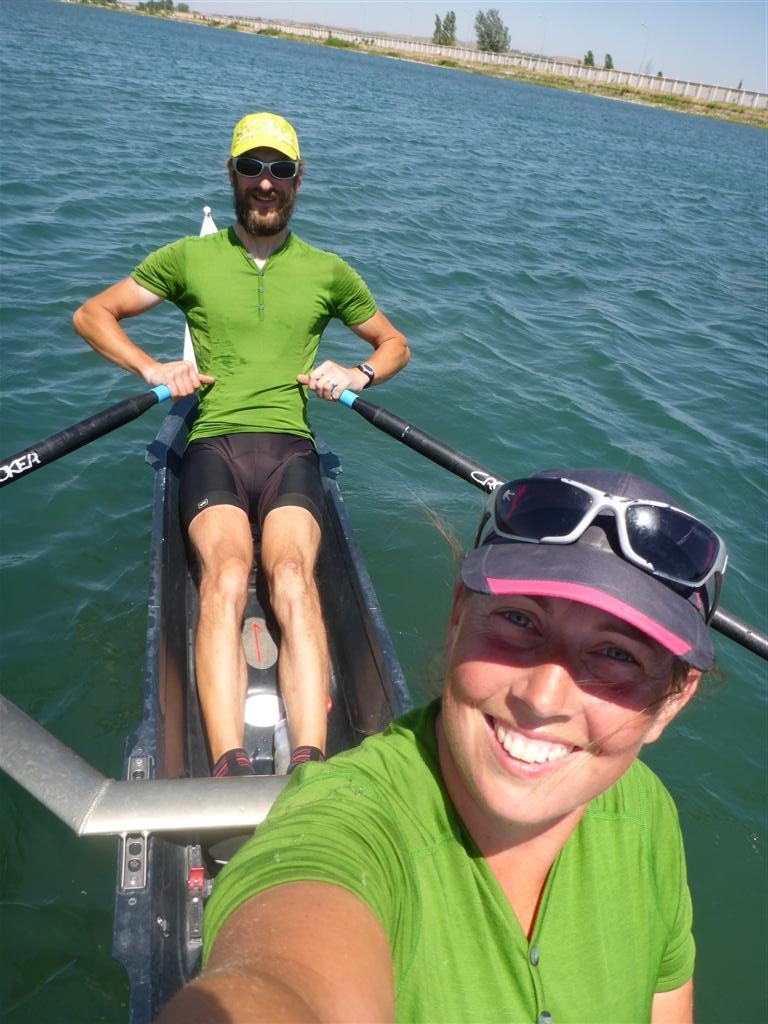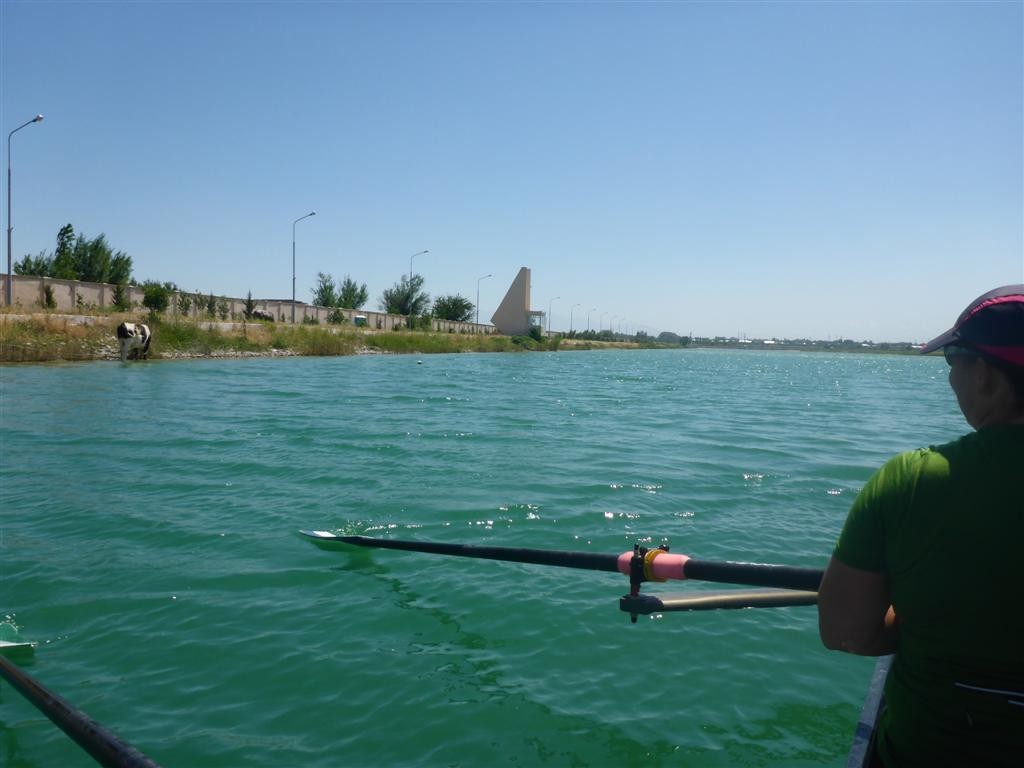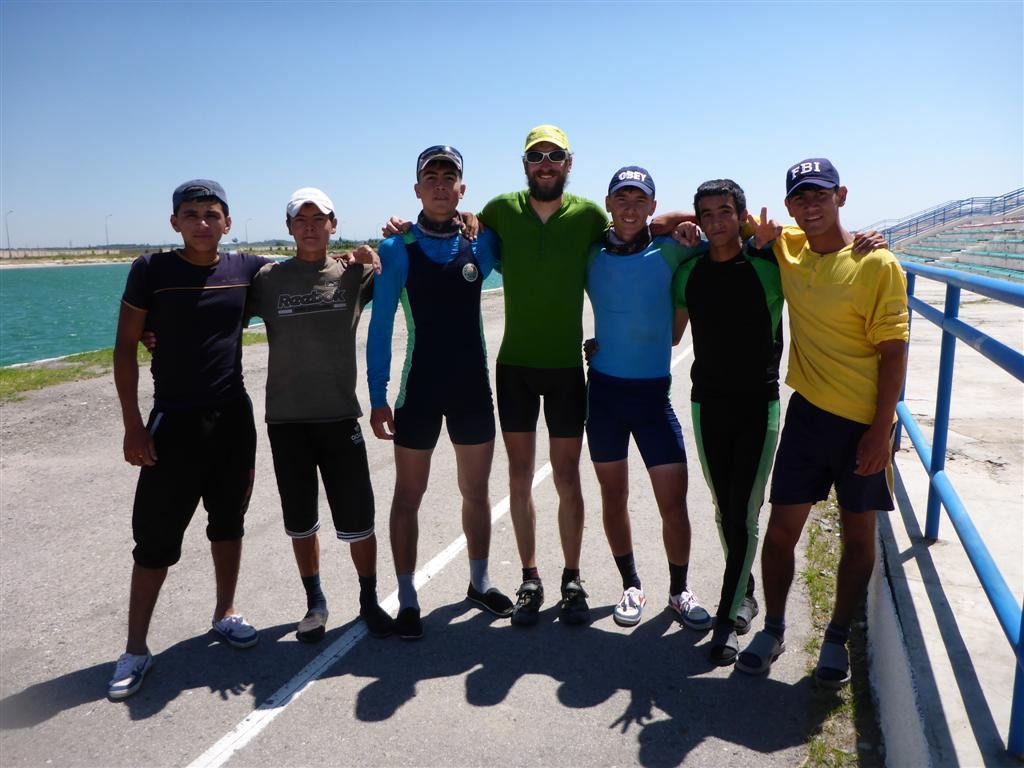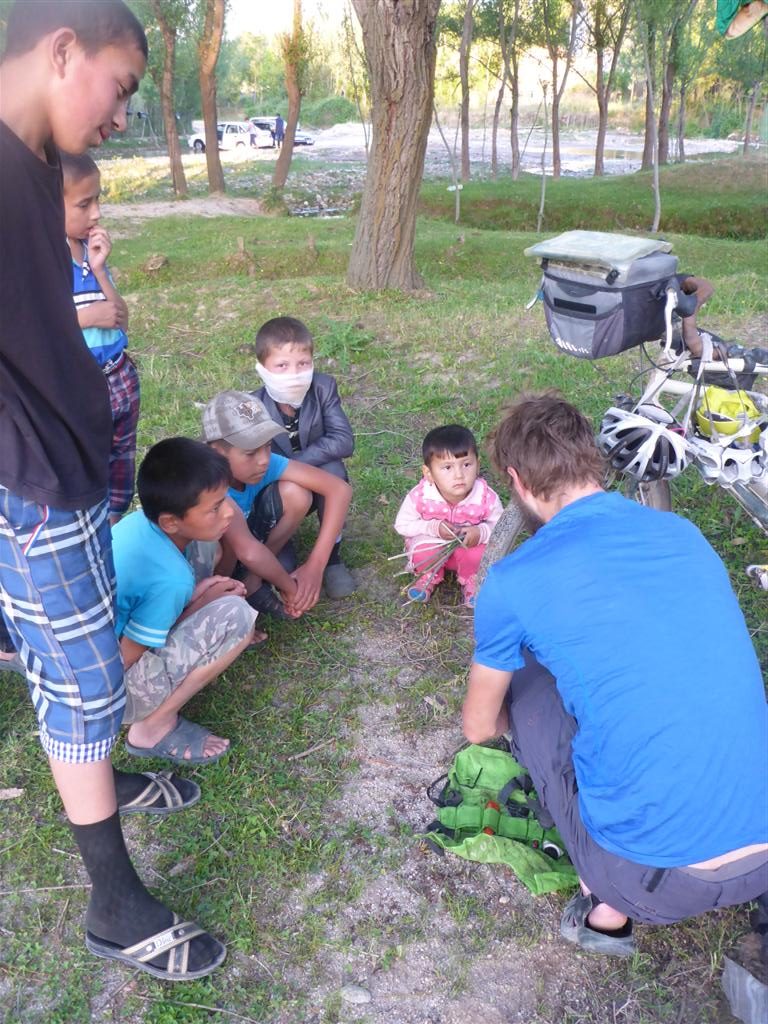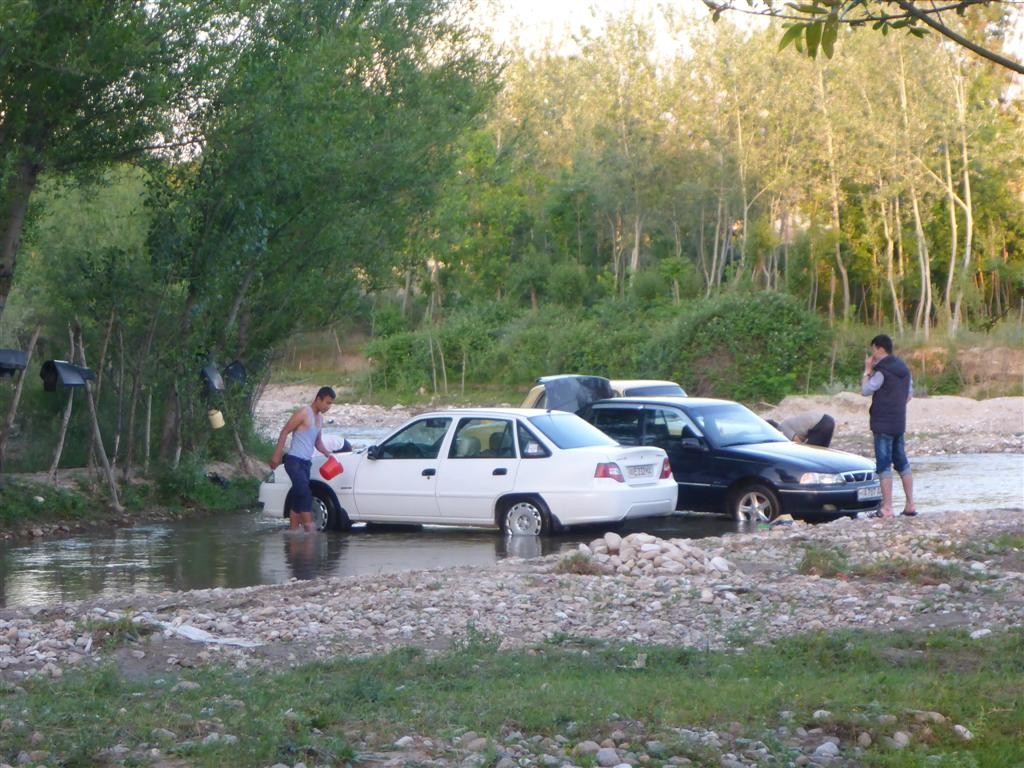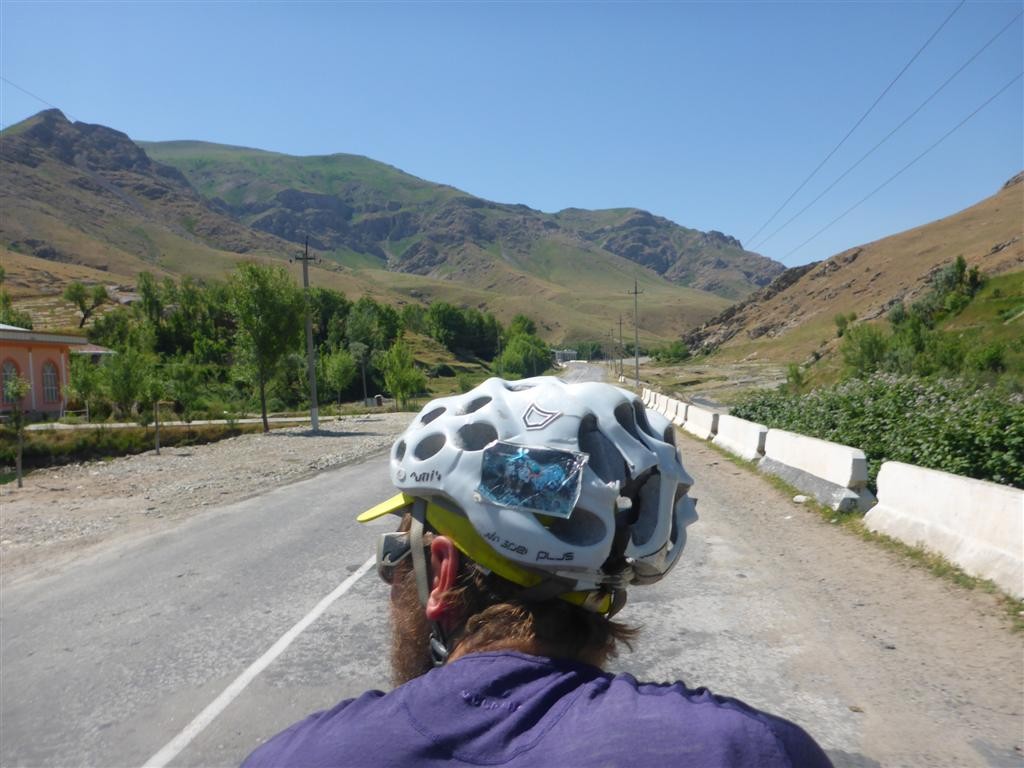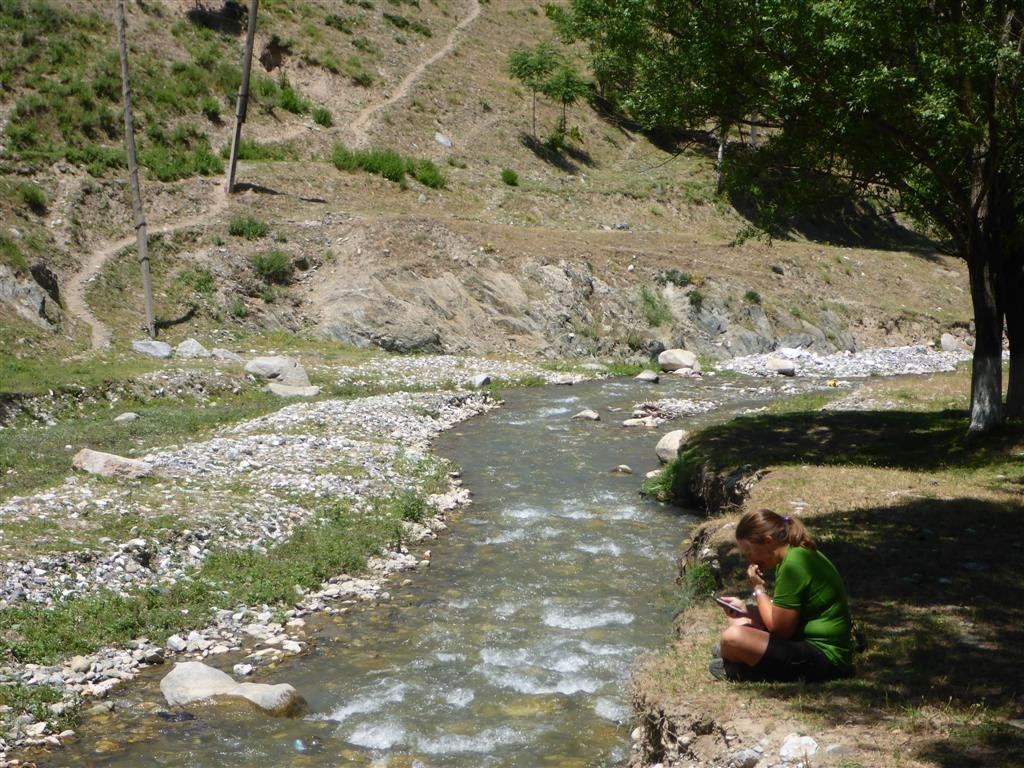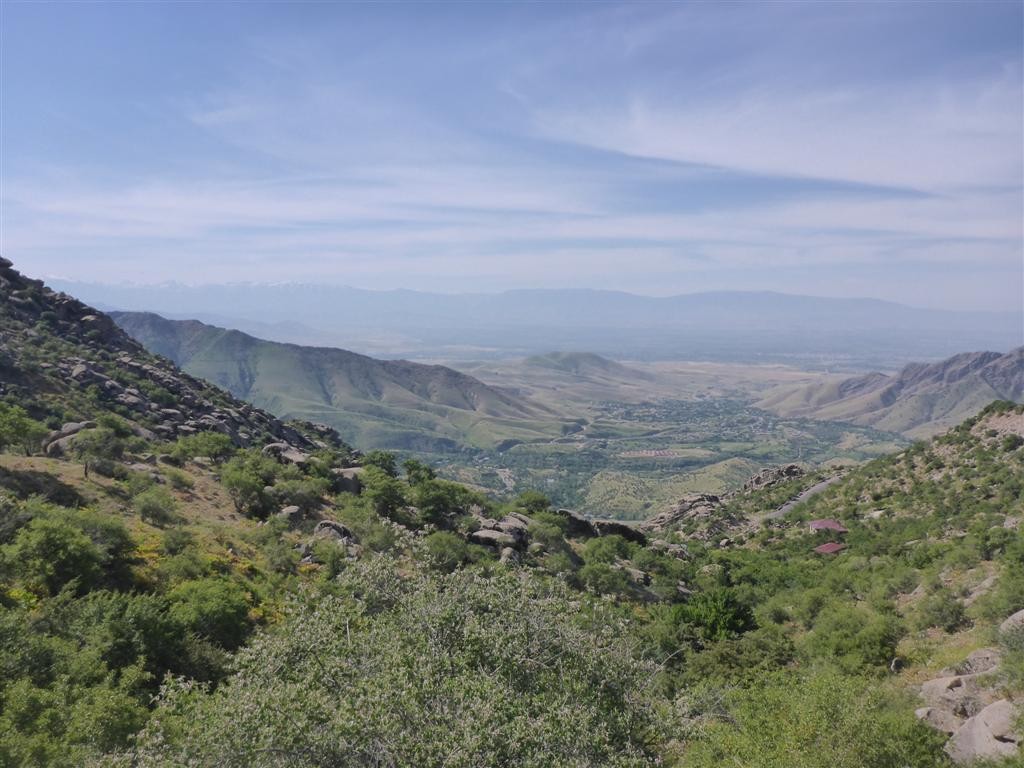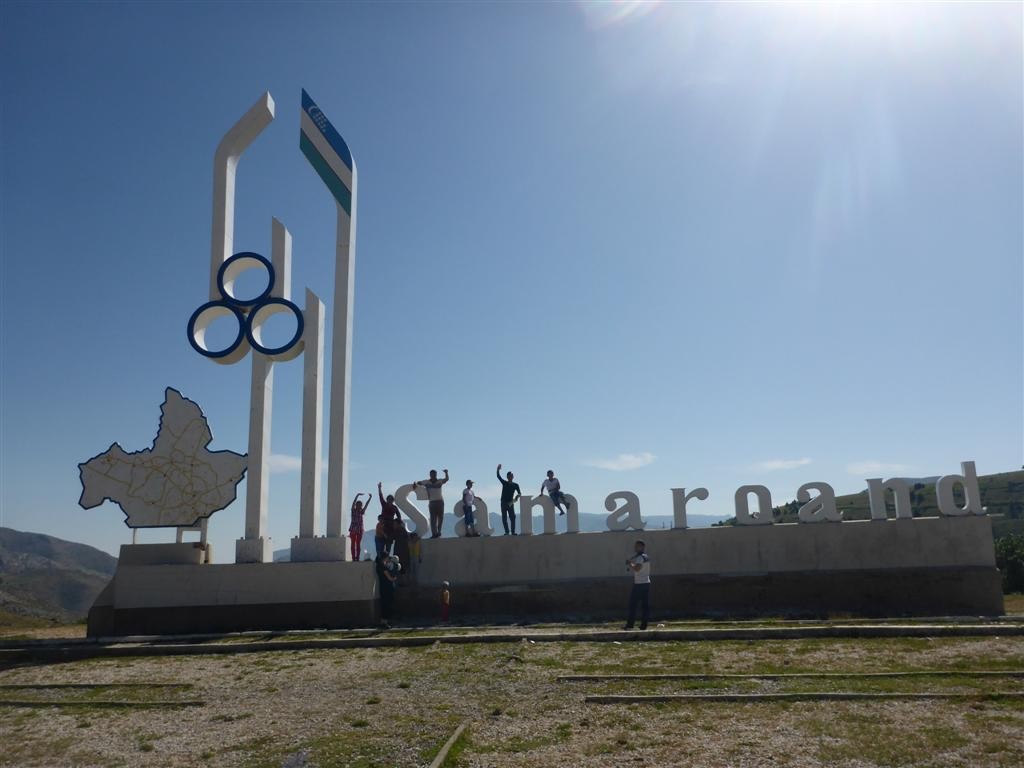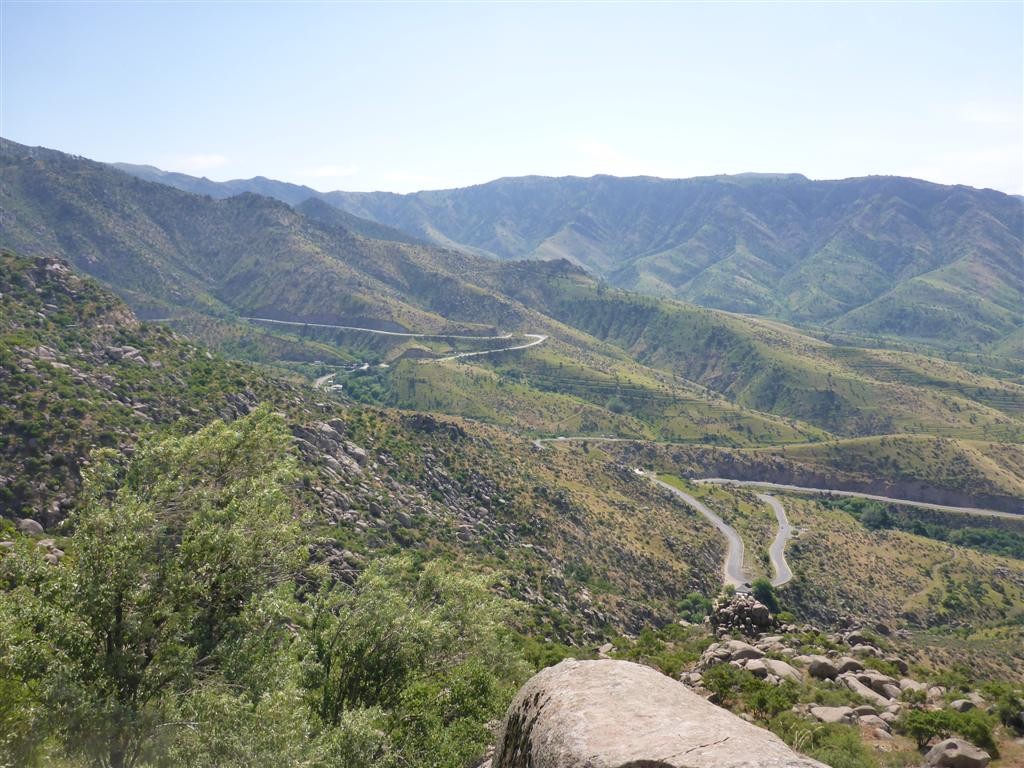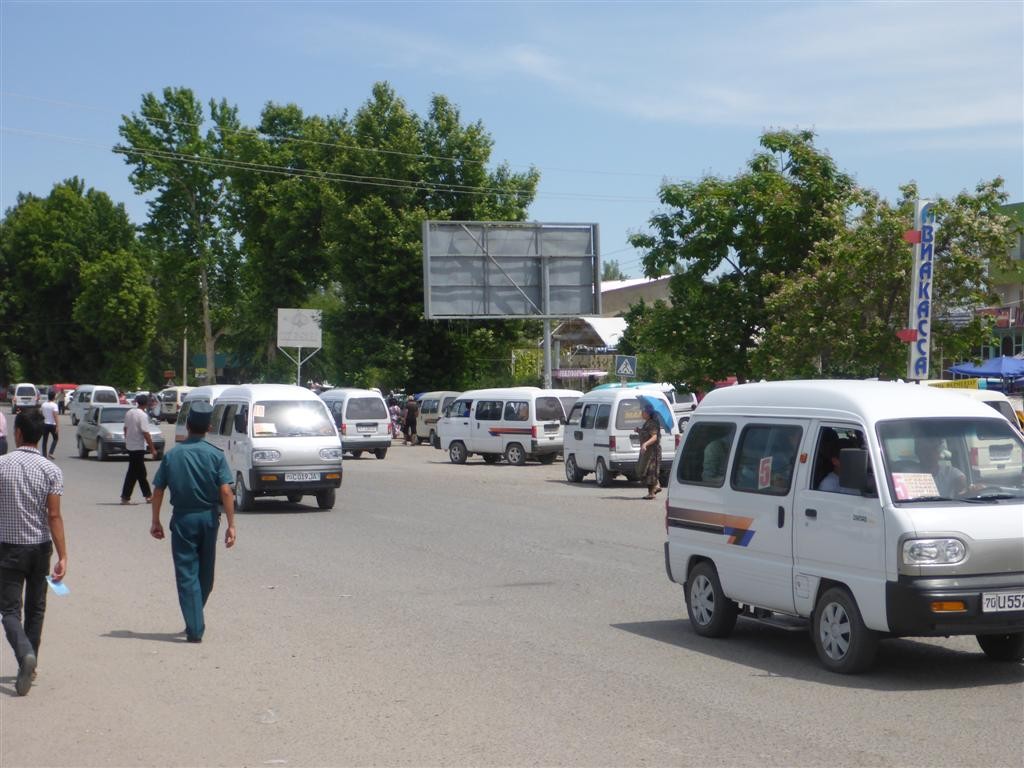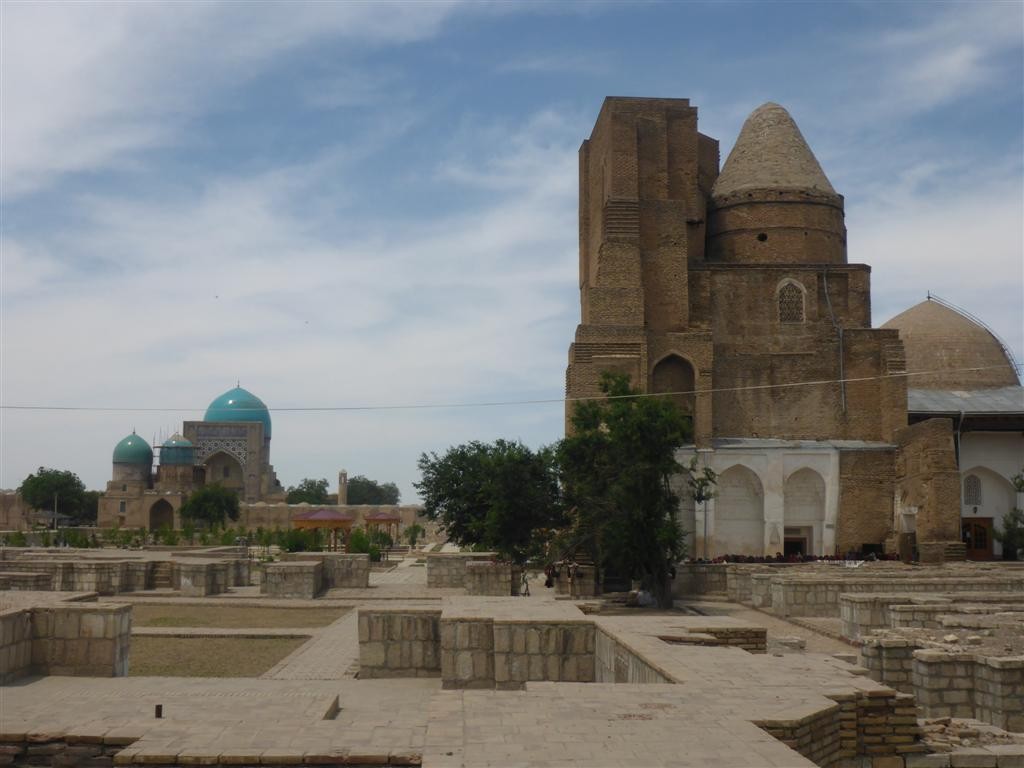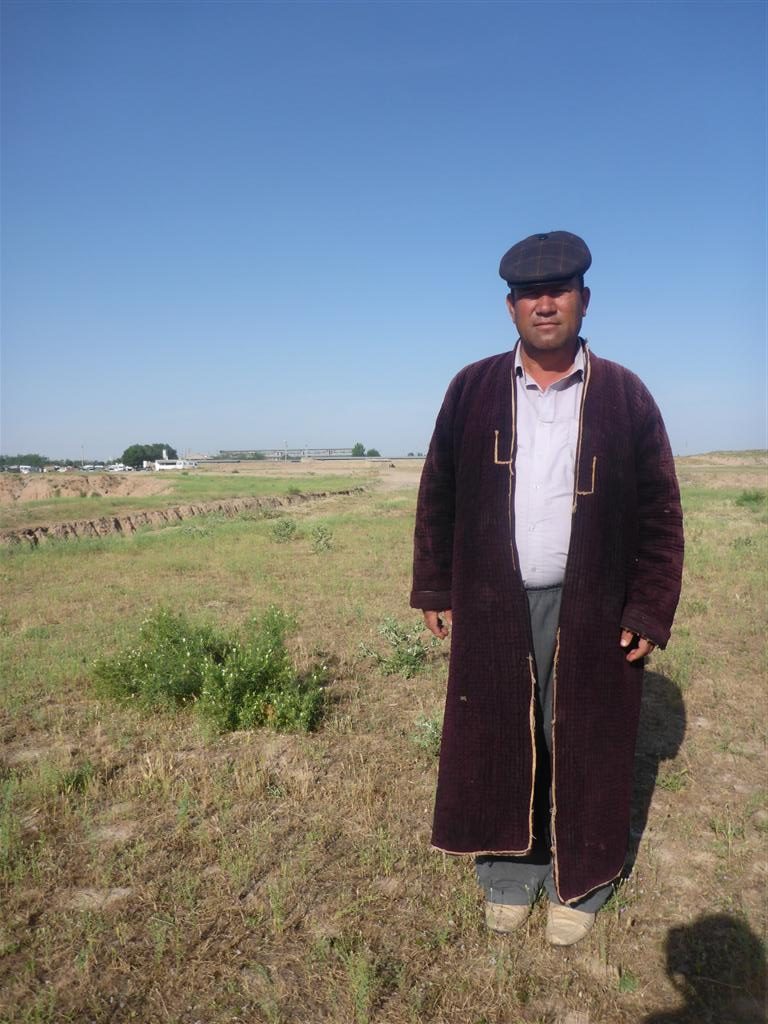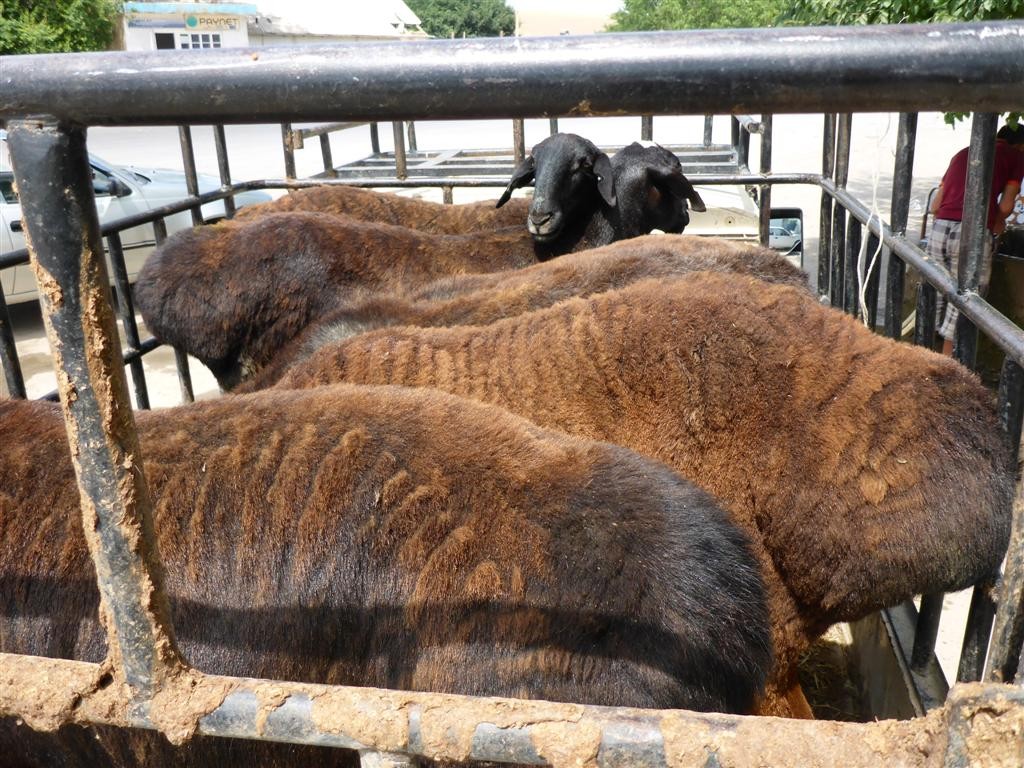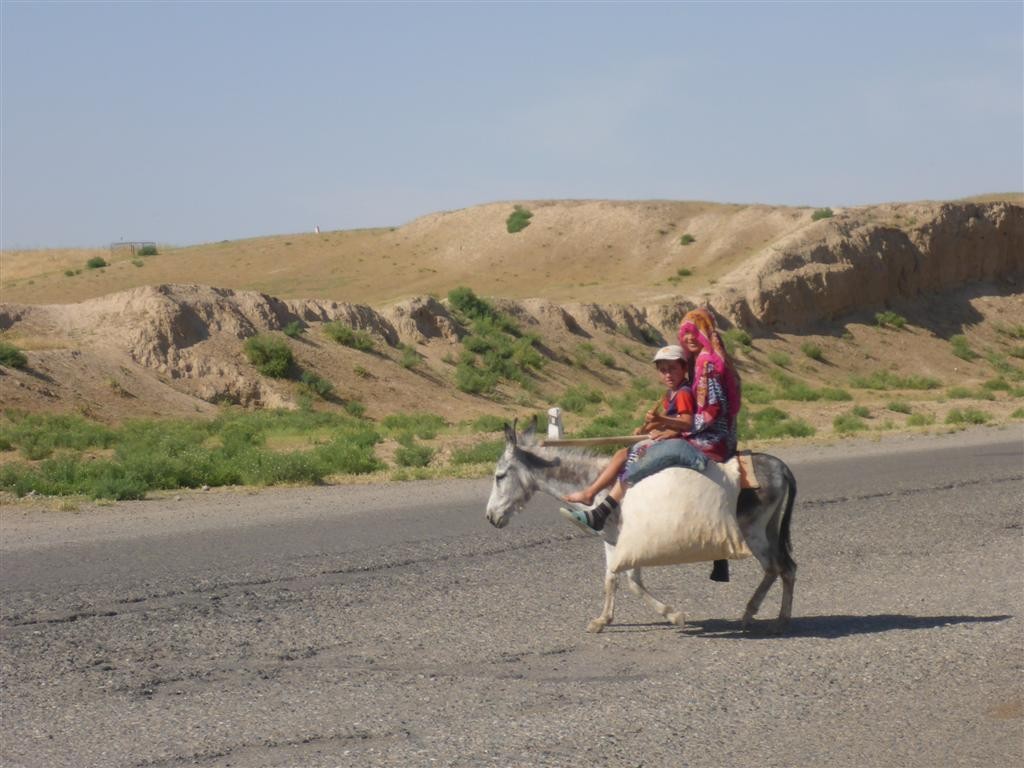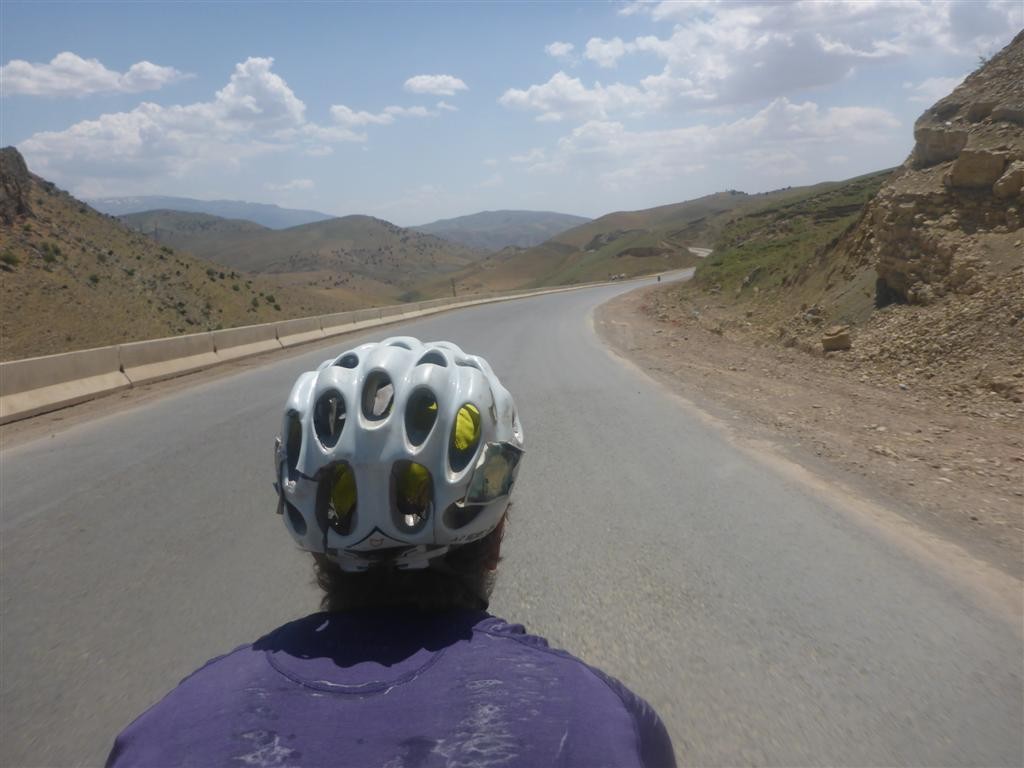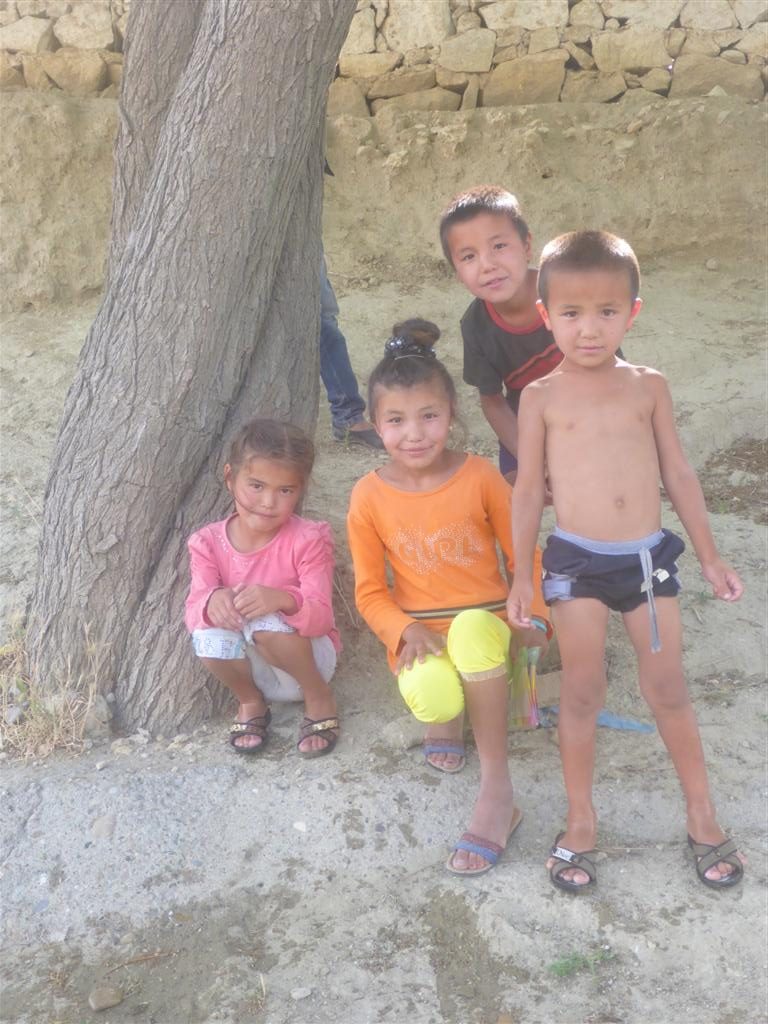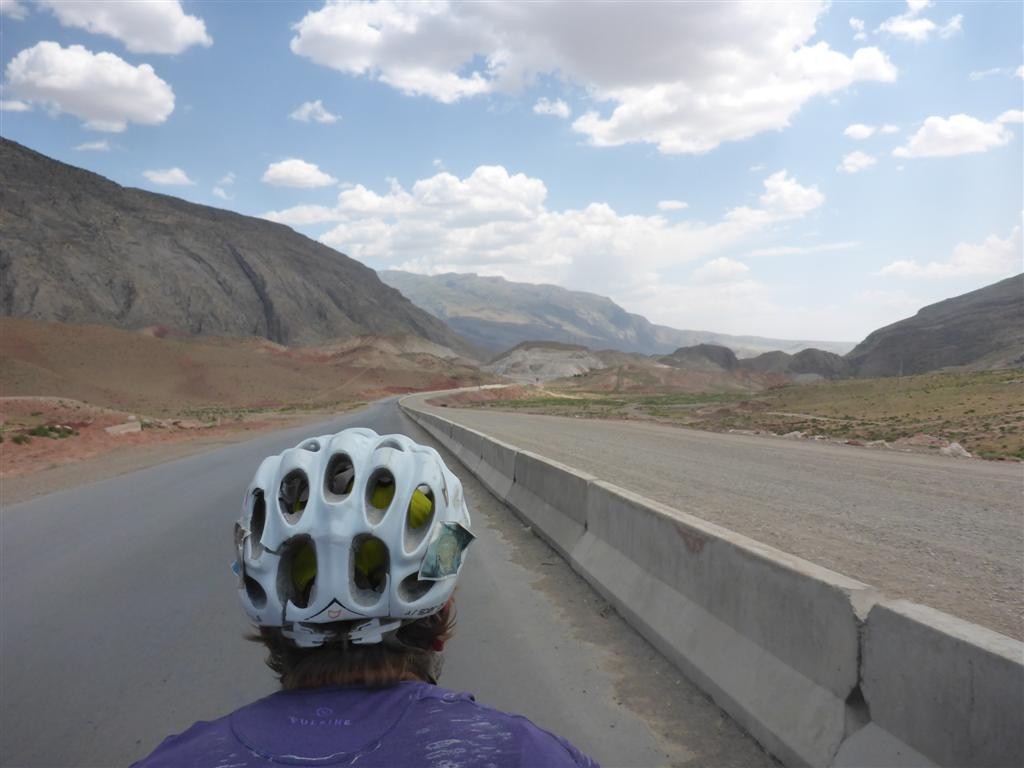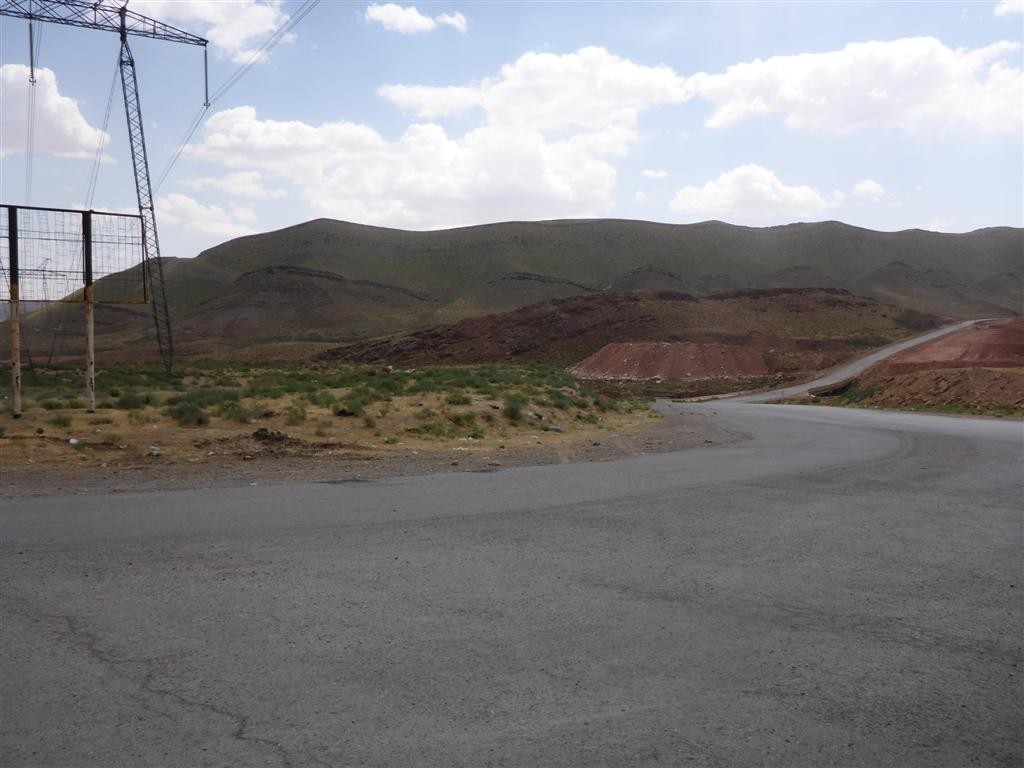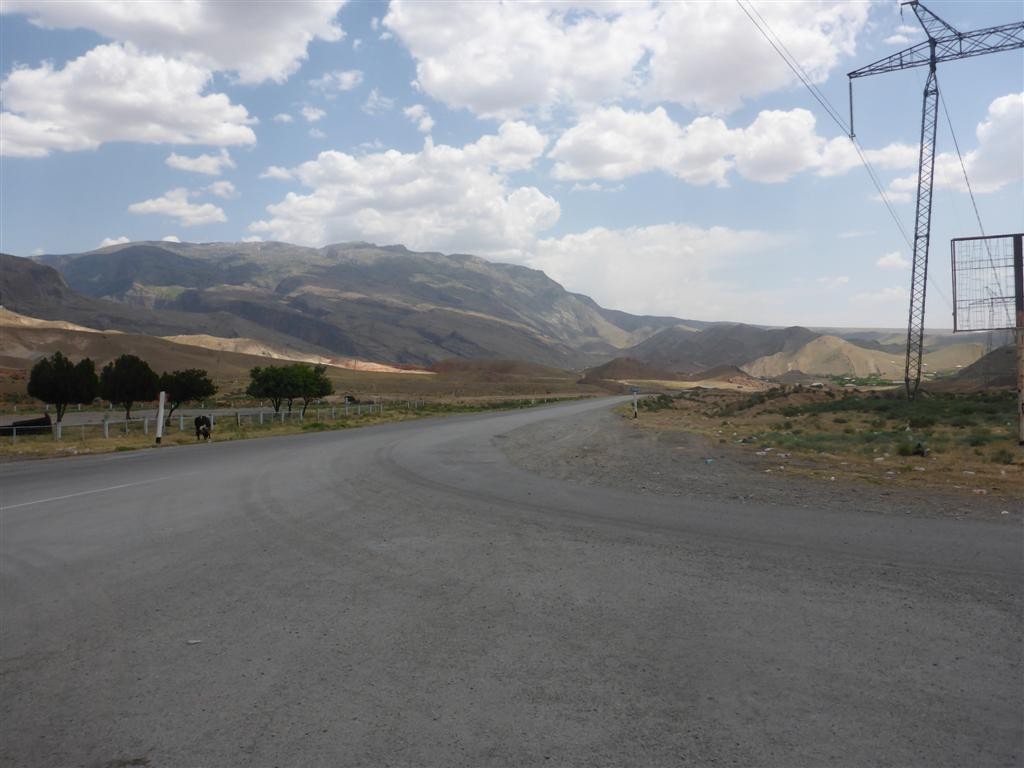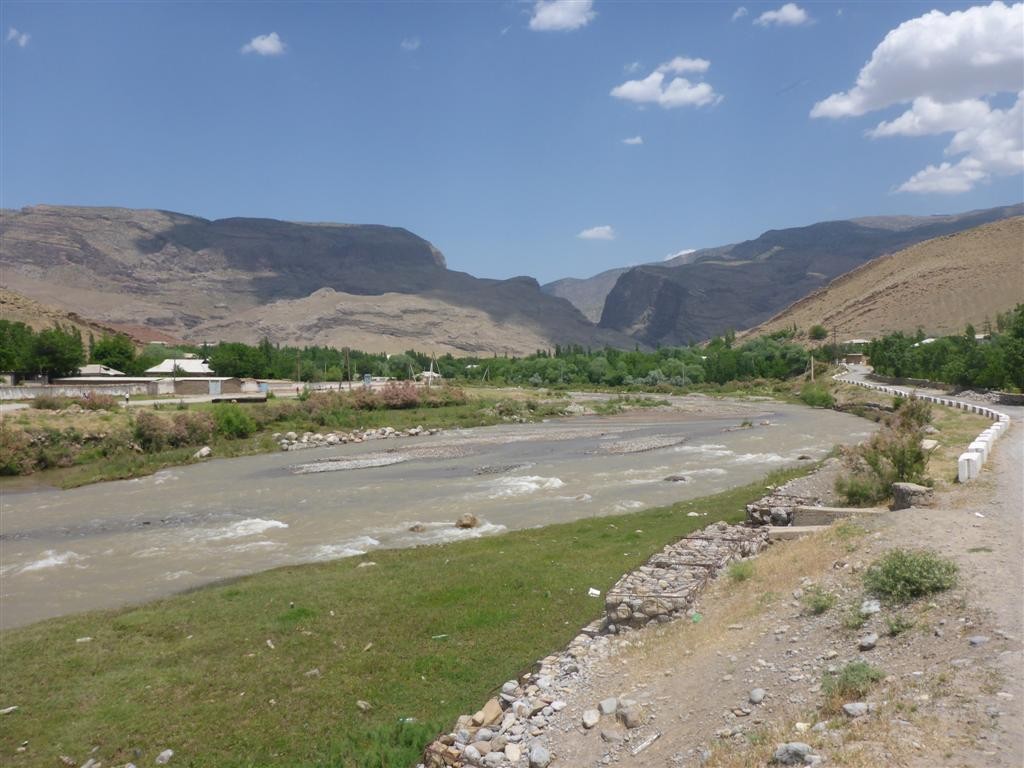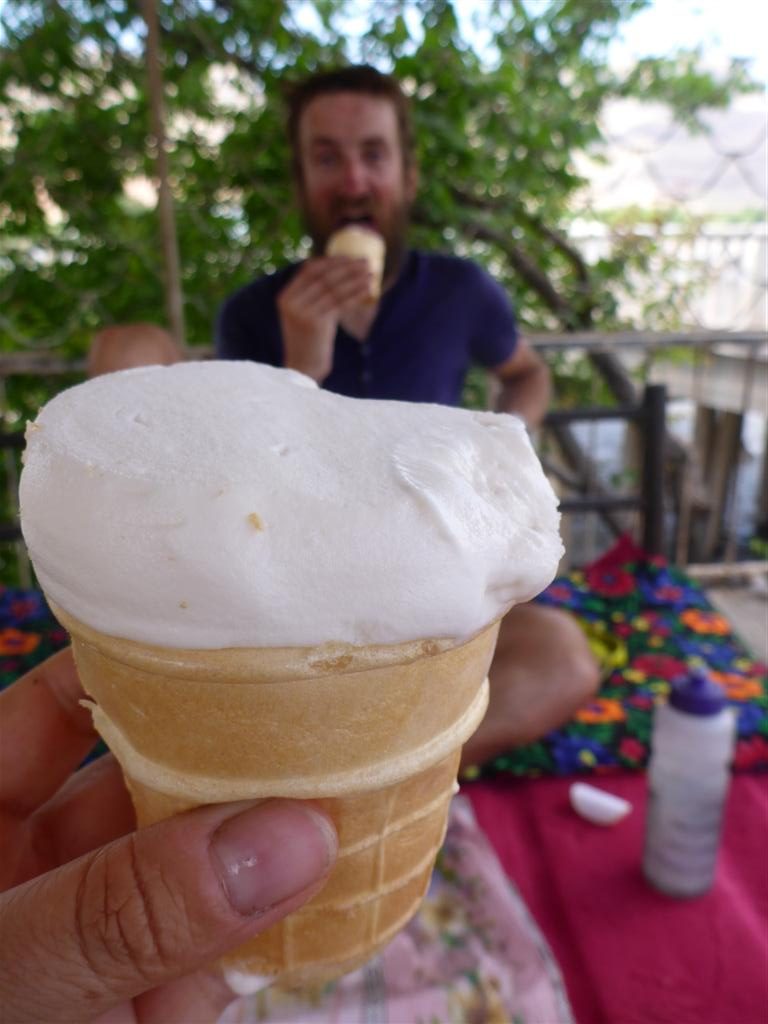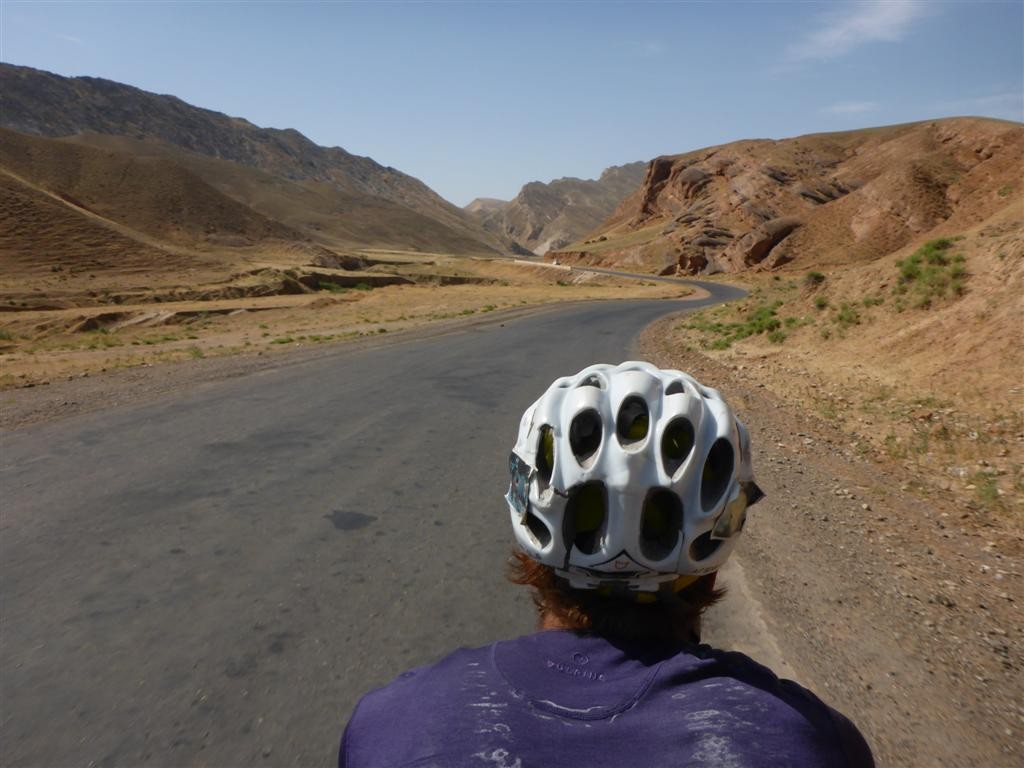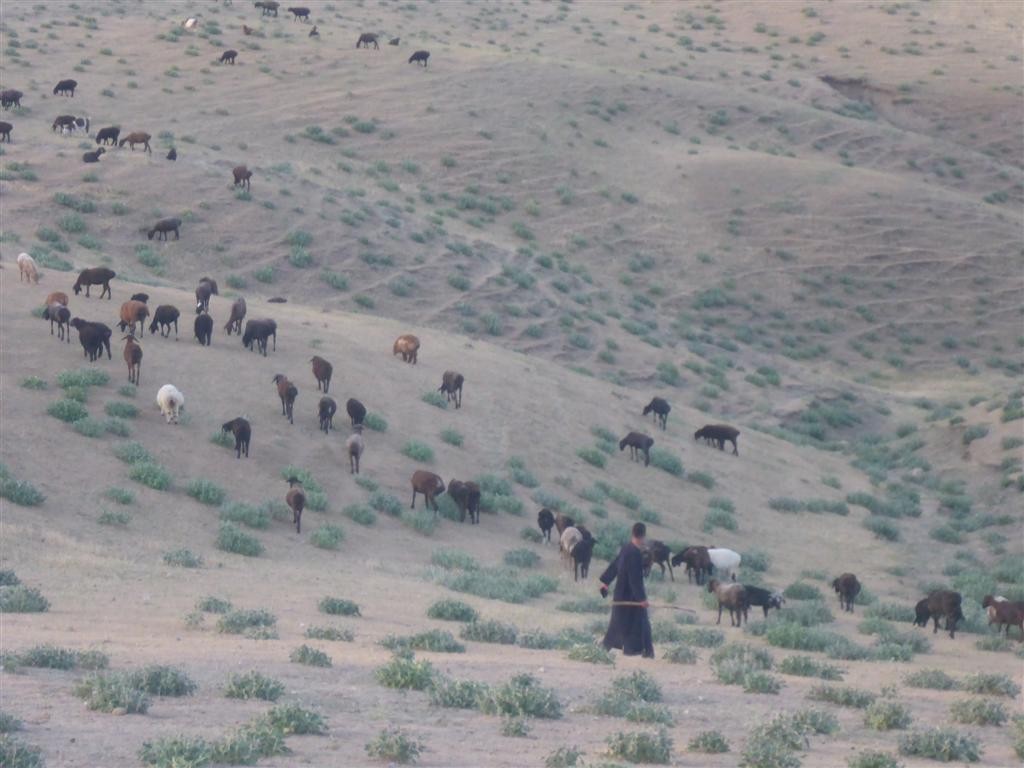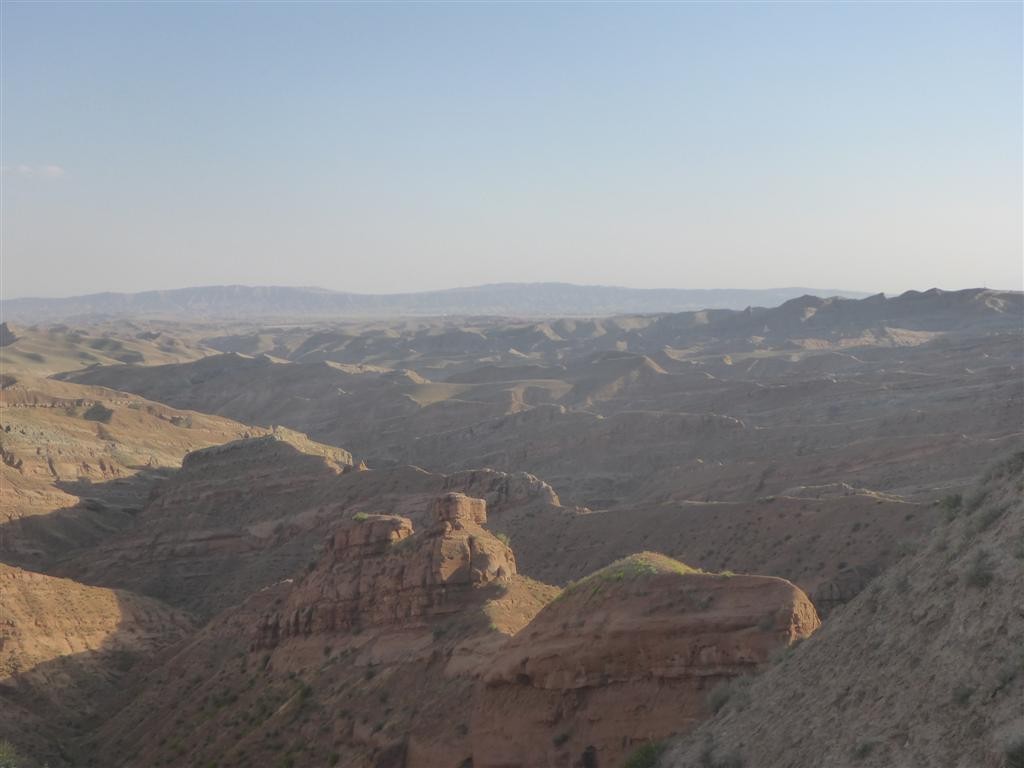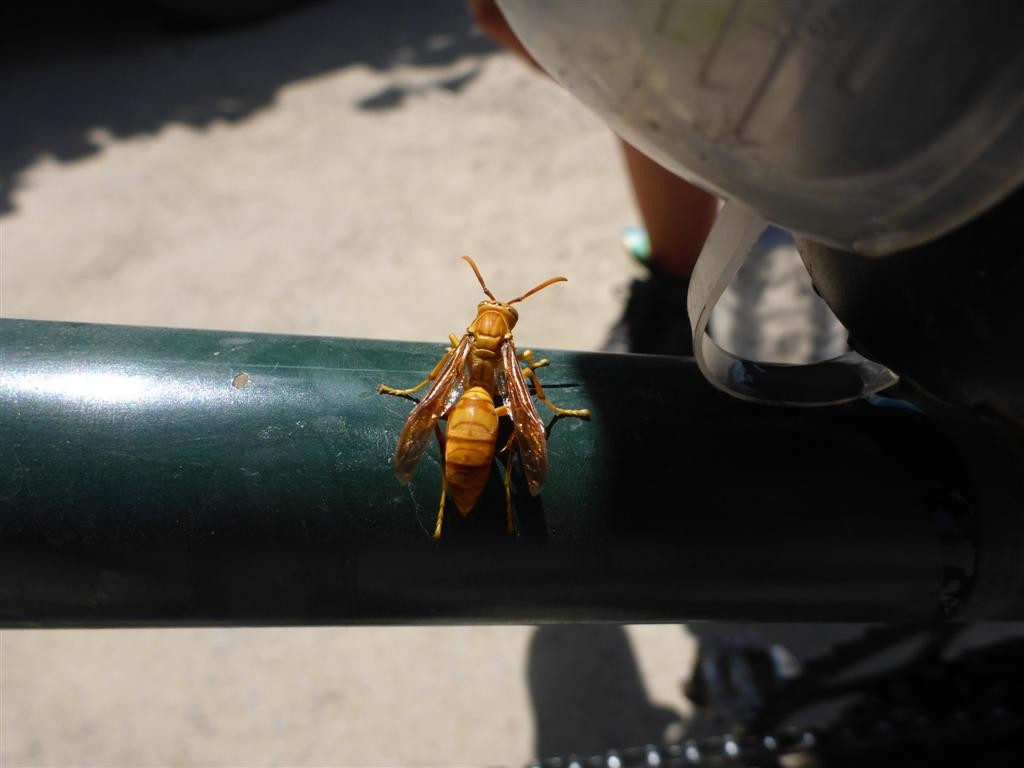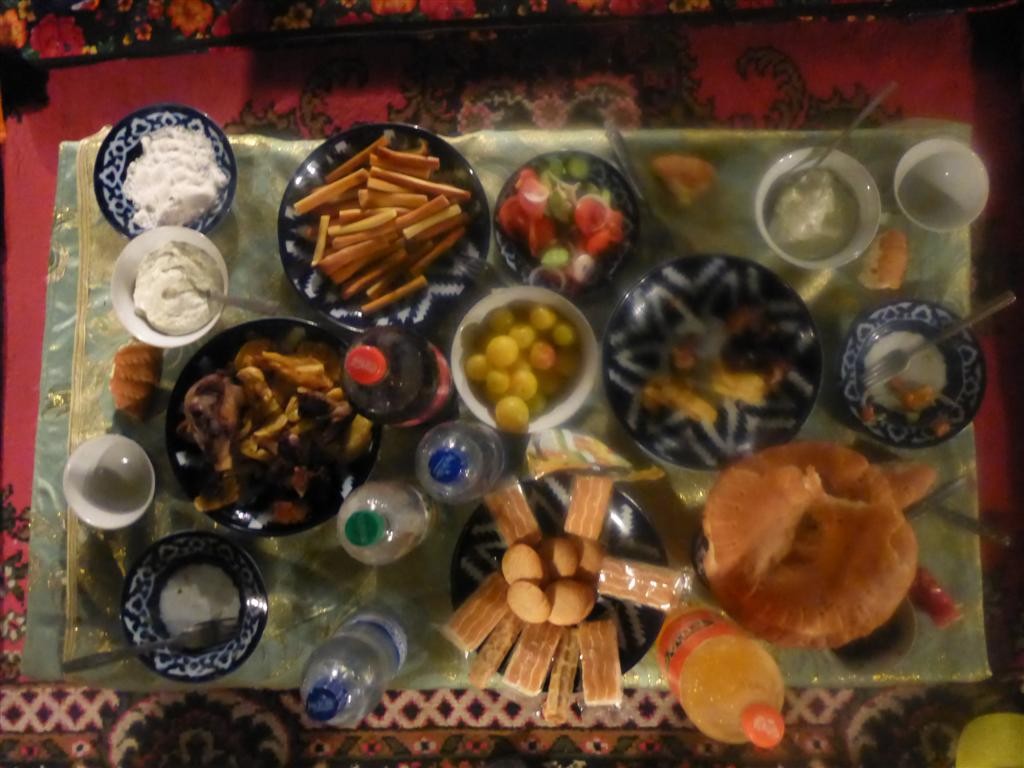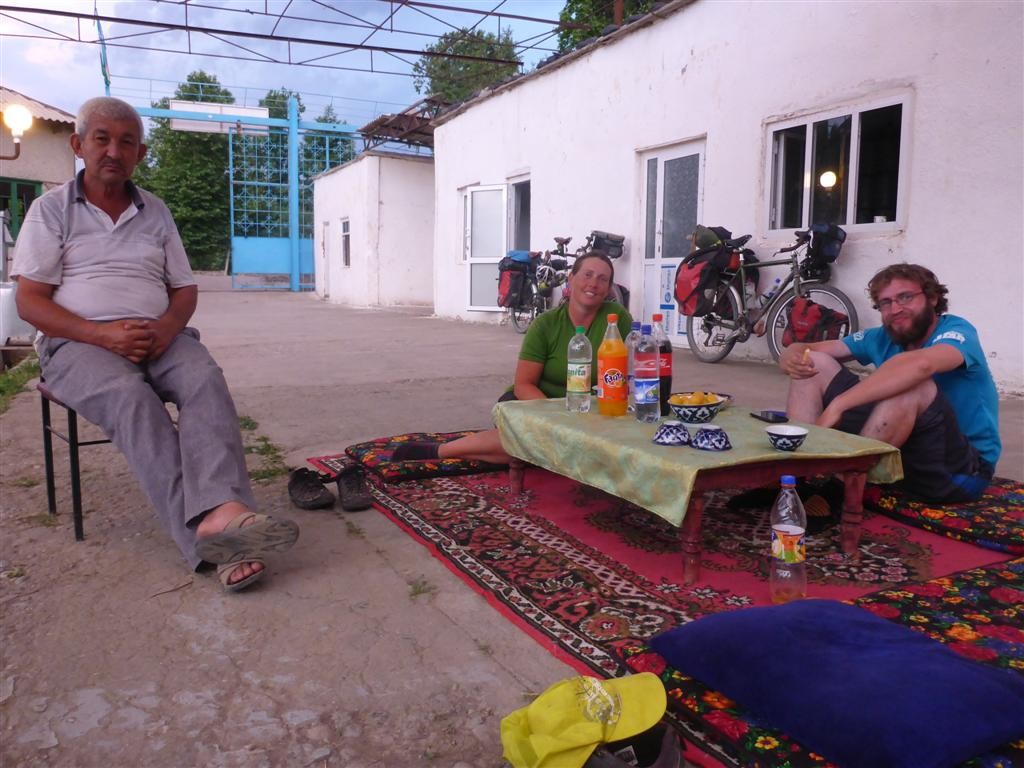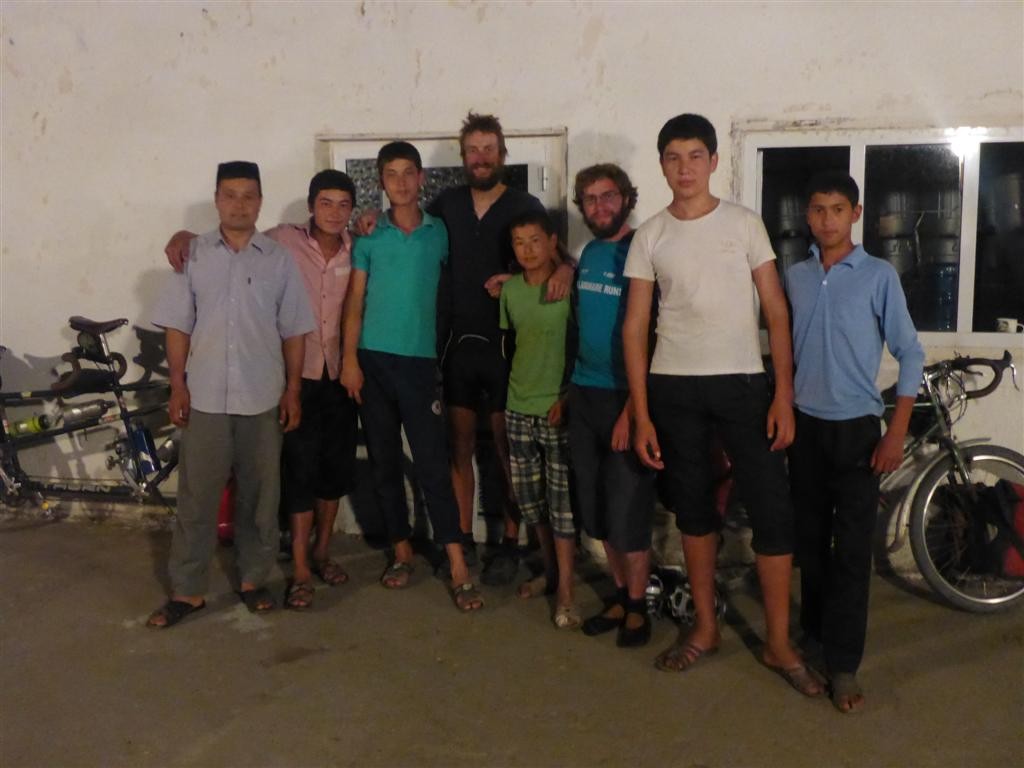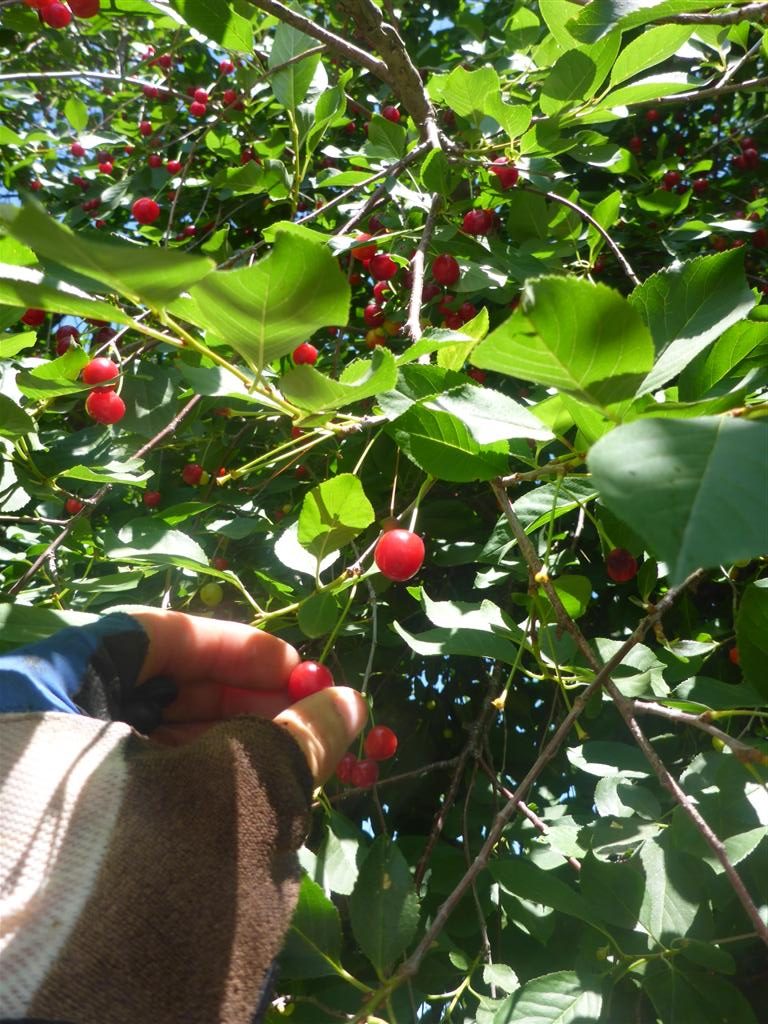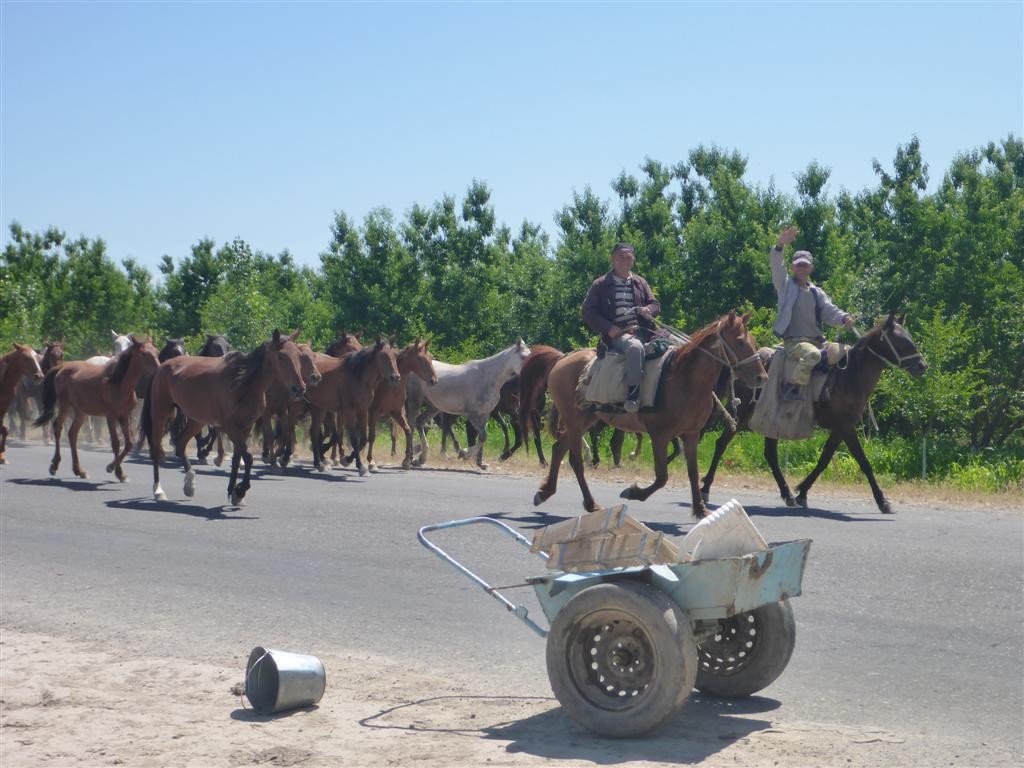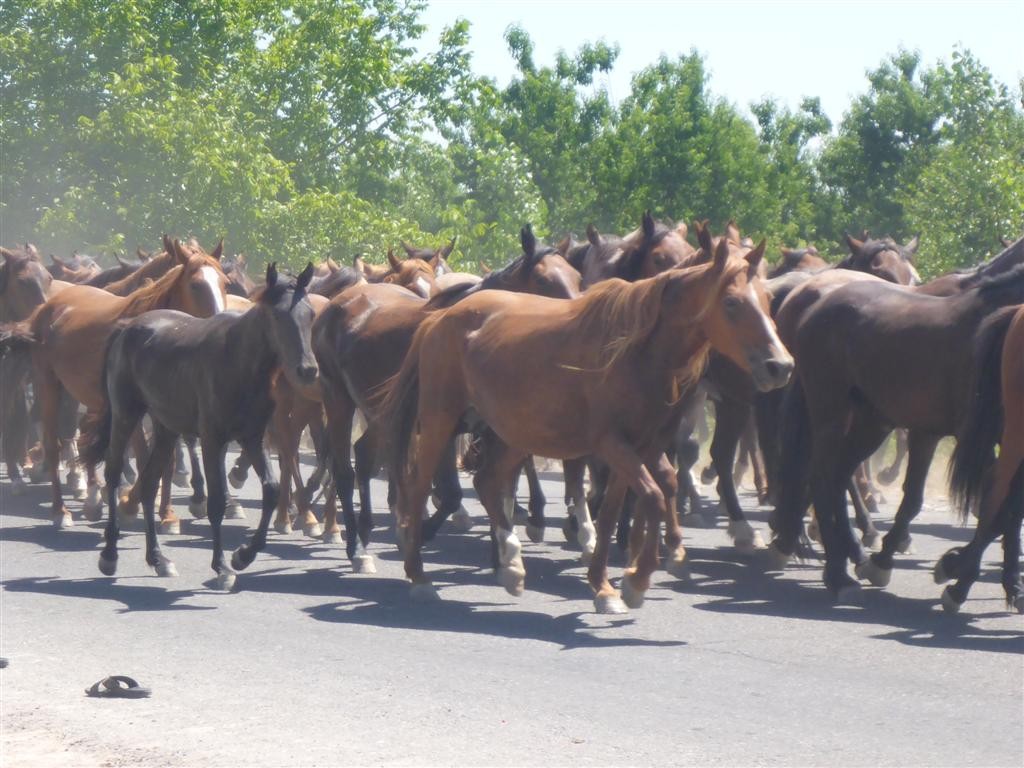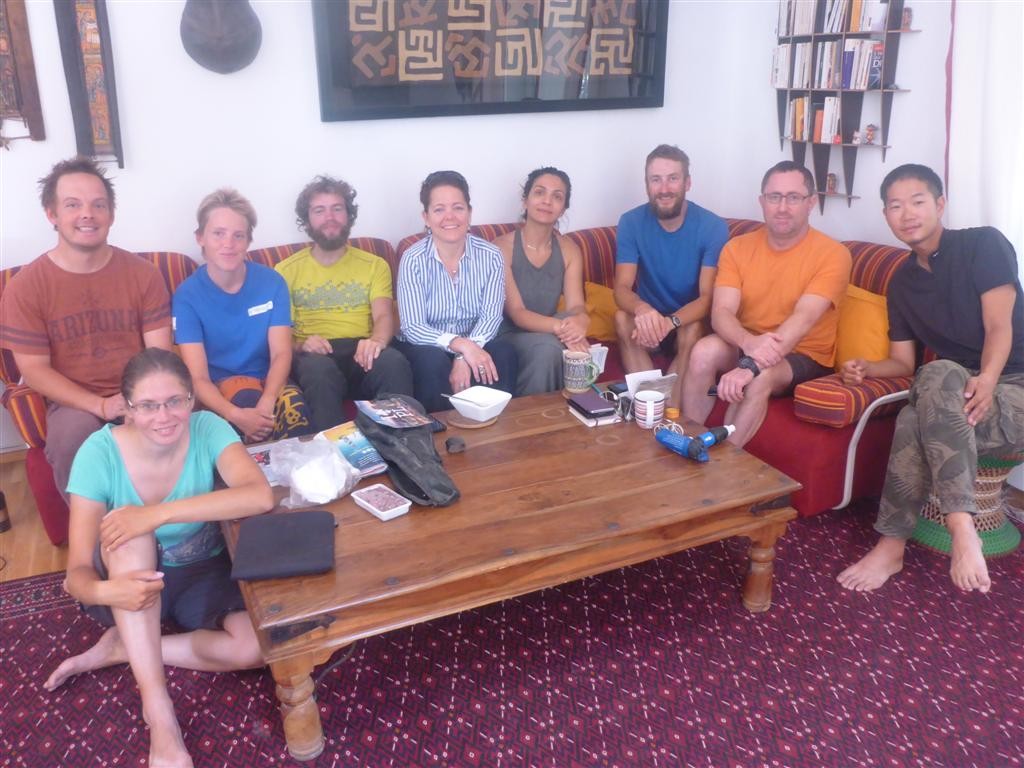Khorog to Sary Tash – The Pamir Highway

Before we left England a common question was “Which bit of the trip are you most looking forward to?”. It’ll be interesting if our answers are the same as “Which bit of the trip did you most enjoy?” when this is all over. Picking a single one is almost impossible but featuring high on the list was always The Pamir Highway and indeed this particular road has in no small part shaped our route so far.
Sometimes referred to as “The roof of the world” the Pamir mountains peak at over 7000m in places. Picking its way through these enormous hills is the second highest international highway in the world, the majority of which being over 3500m and with several passes at over 4000m. Even in June it can get quite chilly at that height so we were keen not to arrive much earlier. As such, the big loop up into Scandinavia at the beginning of the trip was included, as well as our winter sojourn in Greece to make sure we rode up into this rarified atmosphere in the summer. As it turned out these additional parts to the journey were much more than just time killers and have made the whole trip even more fulfilling.
There was certainly a weight of expectation as well as a hint of apprehension for this next stretch.

June 16th 2015
Out of Khorog we leave the murky brown waters of the River Panj and now have the much more pleasant, blue-green River Gunt for company. Unsurprisingly the road climbs up and up. Khorog sits at just over 2100m so we have some altitude to gain over the next few days.

Soon we’re coaxed from a bus stop picnic lunch into a nearby family home by a kind old gentleman in a trilby. Over chai and heavily buttered bread we chat to his young daughter who wears a Union Jack bandana and tells us she loves living in Khorog. At 10 years old she can speak Tajik, Pamiri, Russian and English and is understandably surprised that we only have a quarter of her language skills. There are several different languages and dialects within the Pamir region, each as different to one another as Geordie is from English and equally incomprehensible to the uninitiated. A Dushanbe resident would find it extremely difficult understanding a Pamiri speaking their local tongue.
The home feels surprisingly European with a sofa for the guests (the family stay on the floor) and through an open door we spot a fitted kitchen. All very different to the sparse central Asian houses we’ve visited before.



With our extended lunch over we climb back on the bike with a wave and continue climbing steadily upward through tunnels to protect us from landslides and decorated with Soviet Union motives, then along the busy, green valley floor. The mountain peaks on either side are streaked with snow and most are now over 5000m high.

Gaining 1000m over 100km makes for a very pleasant gradient the next day. More significantly we’ve passed 3000m above sea level which is where most people begin to feel the effects of altitude. A short walk off the road to investigate a rickety bridge leaves us heavy legged and out of breath climbing back up the bank.

We spend the night acclimatising at a height of 3500m at an old Russian sanitorium in Jelondi. Built around some natural hot springs and still popular with the locals as well as travellers passing through for soothing aching limbs, the dark, wood panelled corridors and unusual location are reminiscent of The Shining.

Floating in the warm waters is wonderfully relaxing despite sharing the bathhouse with several naked Tajiks (separate baths for men and women; leave your clothes at the door).


We both sleep reasonably well, only waking once or twice to take some big breaths but I can feel my heartrate is higher than normal and the run to the breakfast table is harder than normal. The main task for the day is to cross the Koitezek Pass, over 700m above us and we begin the climb cautiously on a nice smooth road, not too steep. The surface and kind gradient last until the final 400m of ascent when we round a corner and are faced with a triple whammy of difficulty. The road ramps up to 10-12% and degrades to a loose mess of rocks and gravel. On top of that we pass through the 4000m above sea level point meaning the extra power required to get up the slope has to be provided with only 12.5% of effective oxygen with each lungful of air, compared to the generous 20.9% we’d have if we were at sea level. Hopefully we made a few more haemoglobin overnight to help us cope.
It’s a struggle in no uncertain terms. Lots more gasping, a few stops and several calls for “Power! Power!” to accelerate us up and over the largest obstacles and eventually we reach the very unassuming summit. The road just flattens off and it’s only our Garmin that confirms we’re at the top, 4271m above sea level. We both feel dizzy and wobbly-legged, a bit like the feeling after a couple of morning chachas.

A short respite of tarmac across the top doesn’t last so there’s no rewarding smooth descent, just more horrible, loose rocks and another few mm taken off the brake pads through overuse. It’s not until we’ve crawled back up to 4100m on a second, even harder, looser, steeper climb after lunch that we find a consistent stretch of blacktop.


This brings us round to one of the most wonderful views of the journey so far. Down below us lies the Alichur Pamir, flanked by the Northern and Southern Alichur Ranges, each over 5500m. The plateau between them contains two lakes surrounded by salt encrusted marsh land. The colour of the water changes from green to blue to black as the evening light recedes.

We camp near the edge of Lake Sasykkul and spend a considerable amount of time marvelling at our surroundings and how fortunate we are to be right there, right now. This is what we came for. This is why dozens of cyclists ride this road each year and thousands of others dream about it.

The briefest of brief swims in the freezing lake raises my high altitude swimming challenge score to 3820m even if it only lasted 3820ms.


In the morning the pond next to our tent is covered with 5mm of ice and we’re glad we still have our winter quilt for warmth.
A routine check of the rack bolts on the bike reveals that all the bumping around the day before has taken its toll and there’s an ominous crack around one of the mounts on the fork. It’s been a hard couple of weeks for our trusty steed. Could this be terminal?

A scratch of the head and a rummage through the ‘In Case Of Emergencies’ section of the spare parts bag brings out some jubilee clips and the ever faithful zip ties. Belts and braces are attached to the fork leg and we reorganise the kit so there is less weight in the pannier that hangs off that side of the fork. Our hope is that the road will stay relatively smooth until Murghab to minimise any more rack wobbling. Murghab looks big enough to be able to support a welder who can repair the crack but is over 100km away.

However 10km down the road we gingerly roll into Alichur, as remote a place as any we’ve come across; Over 200km from Khorog and still 100km to Murghab, the two nearest towns of any reasonable size in the Pamirs. Rough, sandy roads lead between the single story clay houses, several of which lie derelict. A westerly wind whips up the dust around the goats and kids roaming the streets. You wouldn’t come here on holiday, unless you’re a cyclist.

A town like this needs to be as self sufficient as possible, particularly with winter temperatures sometimes plummeting to -50 degC. It’s therefore reasonable to assume that someone here must be good at fixing things.
A barn with a picture of a welder on it gives us the visual clue to point to when we go to look for a mechanic. The small group that has gathered around us understands what we need and we begin our tour of sheds of Alichur.

The first is locked and the owner nowhere to be seen. The second has a welder but no fuel for the generator. A boy is then tasked with leading us across to the other side of town, we’re handed a fresh loaf on the way. This time we have more success. In a yard filled with machinery in various states of disrepair we find a man that looks like he has the skills to save our day.
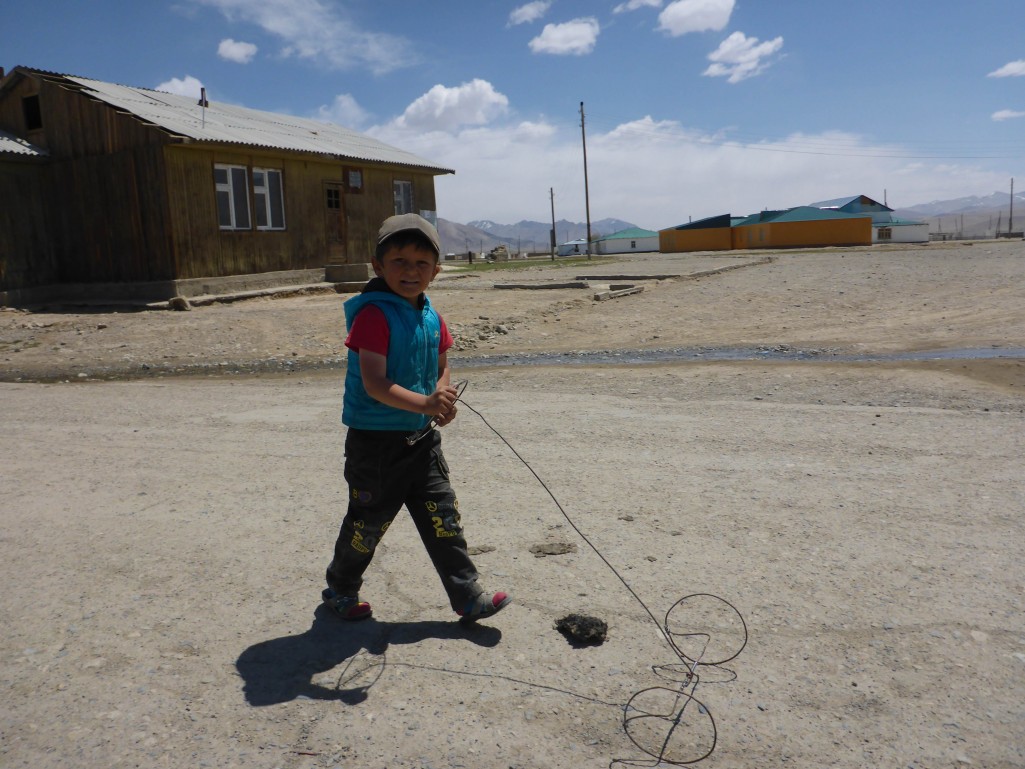

Sure enough, after pointing out the crack and making my best ARC welding impression he nods and gets straight to work. I won’t admit to being an expert in welding technique but the crack is now covered in molten metal which is good enough for me.

With the bike reassembled we pay double the asking price of 10 somani (£1) and are invited in for chai and mutton followed by a look at his prize possession: the head of a Marco Polo sheep. We’ve seen lots of statues of these rare and illusive animals but coming face to glass-eyed face with this stuffed beast makes us realise how magnificent they must be in the flesh. Apparently this one was killed by a wolf but we’re also told that Europeans, Americans and Russians pay huge sums to be taken on hunting trips by the locals, despite the animals being protected by law.
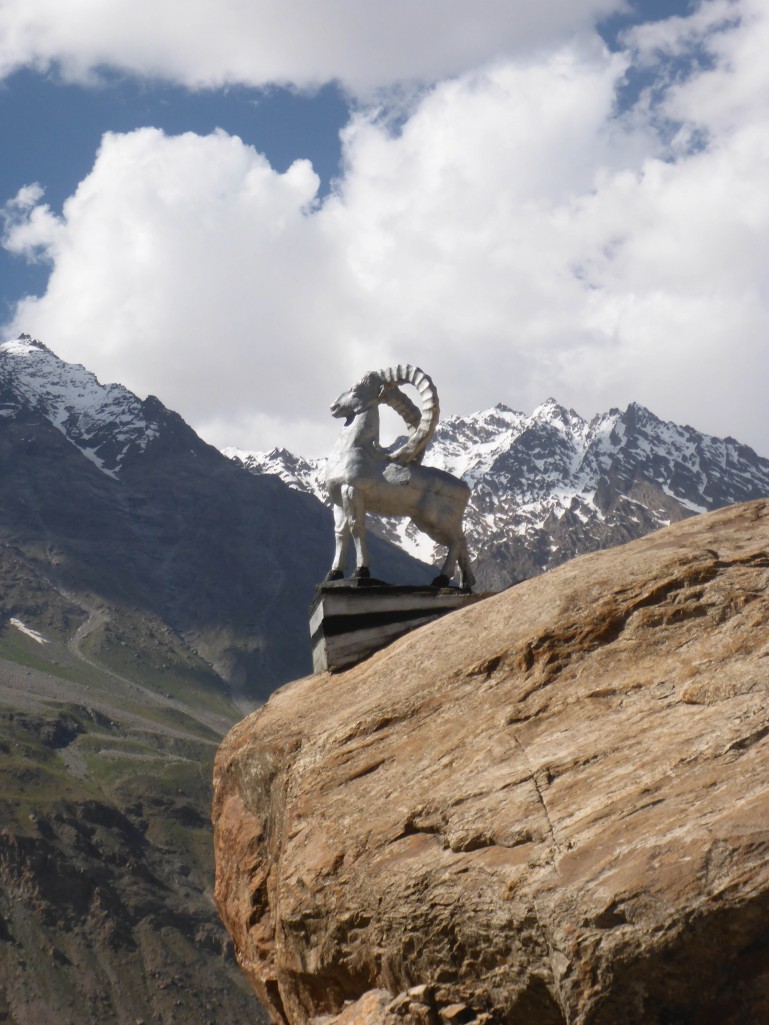


The westerly wind picks us up along with the dust and with renewed confidence in our equipment we’re blown out of Alichur back into the huge expanse of the plateau. With a subtle downhill gradient, a smooth road, no other traffic, blue skies overhead and jaw-dropping scenery this is about as good as sitting on a bicycle gets. Even an irritating Christina Aquilera ear worm can’t spoil the moment.

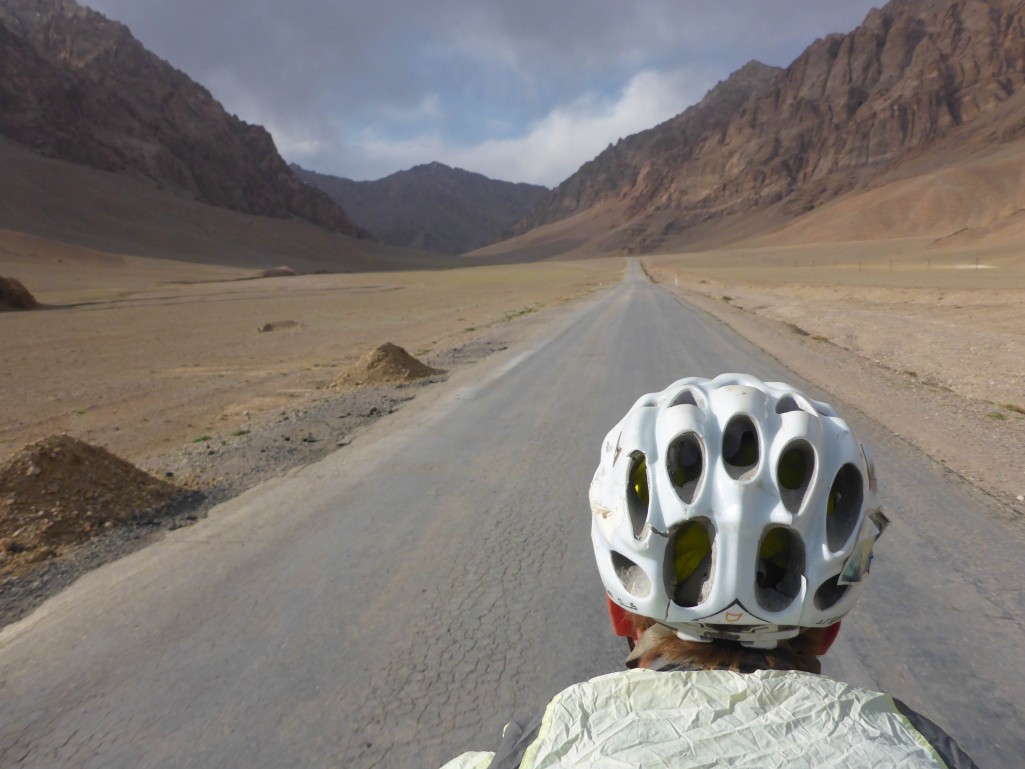




By the following evening we’re in Murghab, a town built as a military outpost by the Russians that has somehow survived long after the soldiers left. Or at least the Russian ones. There are still some Tajik guards on the way into the town that insist on writing our names and passport numbers into their all important Big Exercise Book. The amount spent across central Asia on exercise books and employing men to write names into them must be staggering.



Murghab has a statue of Lenin, a tent that sells Yak milk ice cream and a bazaar built out of shipping containers. It feels every bit the frontier town that it effectively is and everything and everyone seems to have taken a pounding from the weather and the altitude. There are shells of cars, half buried in sand, stacks of yak dung left to dry so it can be burned for fuel and the only supply of water is from wells dotted around the town.




It’s also largely a Kyrgyz community so unofficially uses the Kyrgyz time zone and plenty of the men wear traditional ak-kalkap hats.

We check into the excellent guest house Mansur Tulfabek and enjoy a warm shower, heated by a yak dung stove of course. Power for the town is provided by a hydro electric station but each year there has been less snow, less water running from the mountains and less money for maintenance so the supply is unreliable to say the least. Each night a different street takes its turn to have mains power with the rest of the town humming to the sound of generators.
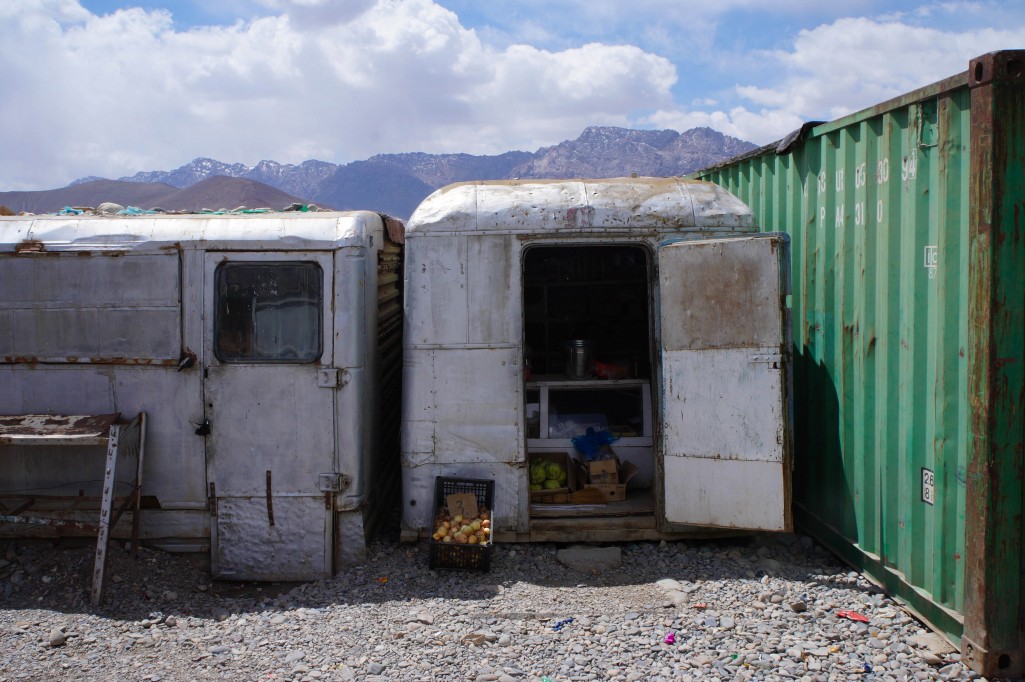
The repair on the fork has cracked again and this time there’s another, smaller crack on the other side. There follows a nervous hour with another mechanic who operates on the street outside his house wielding a welder, grinding wheel and very heavy lump hammer. This time I encourage him to go overboard with the welder and also ask him to produce a curved metal bar that I can attach to both front racks and stop them wobbling from side to side. The end result is ugly, substantial and adds about 1kg to the bike but could well be the solution that allows us to keep going as it’s very sturdy. Negotiations on price start at $100, then down to $20 and we eventually agree on 70 somani (£7).



We’re aware that if we’re not careful we’ll be dropping out of the mountains all too soon. To have come this far and to then not spend the time to have a good look would be a shame so after Murghab we plan a small diversion and turn left off the main highway.



20km along a very rough track that takes us up through a broad valley devoid of any visible life brings us up to a small tented village nestled on a lush green meadow with a pretty meandering stream running across it.
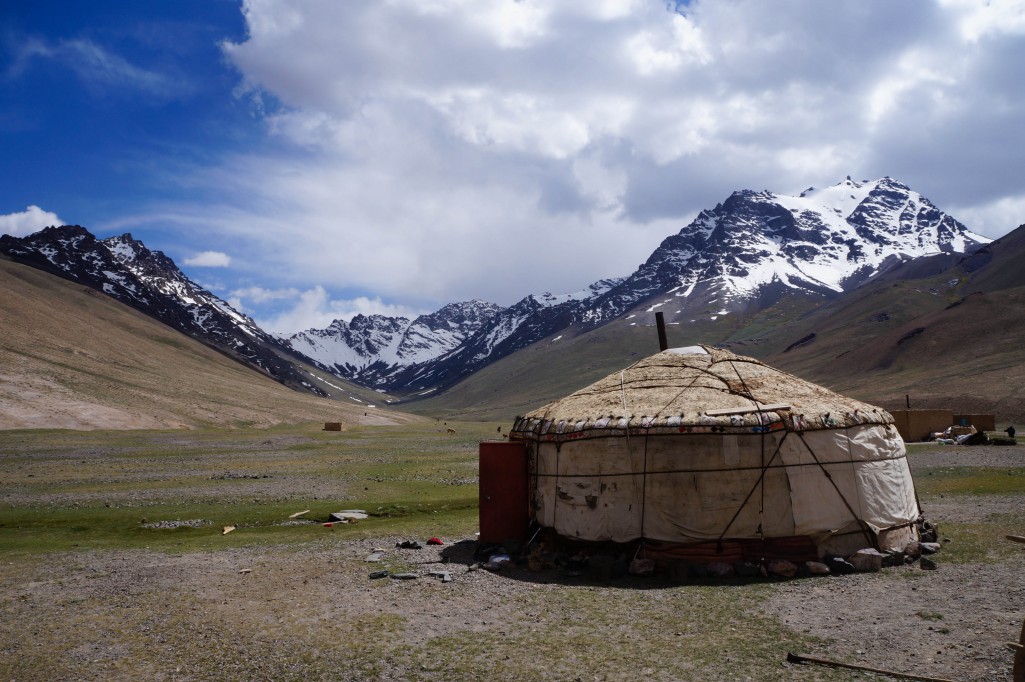

There are four yurt houses and several small brick buildings, used for storage. A few pens are dotted around and one or two young animals are tethered but most of the flocks and herds are out on the mountainside grazing. This is an isolated summer home for a tiny nomadic community.

As we approach a few children come out along with their mother and we’re invited in for chai. It’s cosy and colourful inside. On the stove a big kettle is already simmering and we’re soon sipping black tea accompanied by bread with clotted yaks cream. We wish we had jam to make it a tasty cream tea. The children look at us inquisitively, then after some whispered discussion one of them asks “whatiz your name?”. The school in Murghab has taught them a small amount of English but at the moment they are on their summer holidays. Another family invites us to spend the night in their yurt but we decide to pitch the tent further up the valley so as not to intrude too much.



It’s fascinating watching the rest of the afternoon unfold as the animals begin returning home. First one of the herds of yaks arrive, seemingly of their own accord and they know exactly where to stop for the night. Some boys on bikes bring in a half dozen horses and some cows. Next a huge flock of sheep and goats sweep down from a different hillside and are parked in one of the pens. Finally the last herd of yaks, 30 or more, saunter past our tent with just one of the older men needed to usher them along.




During the evening we manage a walk up the hillside towards the snow line but don’t quite make it to the white stuff.
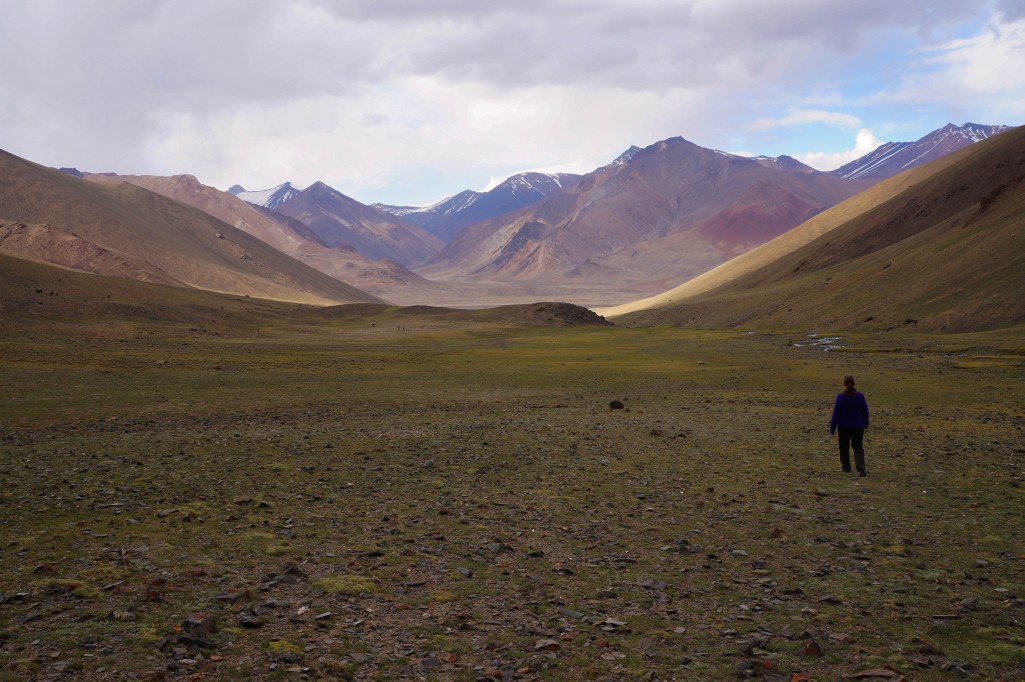

However overnight the snow comes to us with a light dusting on the tent.

There appear to be several large dogs running round the village but on closer inspection we see that they’re actually yak calves. They are incredibly agile and gambol like new born lambs, leaping back and forth over the stream, all with their tails stuck up like the aerial on a dodgem. Even the adult animals can move quickly when they need to which is unexpected. Providing wool for clothing, dung for fuel and milk, meat for food and strength for carrying loads these shaggy creatures are extremely valuable.





The horrible bumpy track back to the main road is now marginally easier being slightly downhill but also in the knowledge that the effort was well worthwhile.
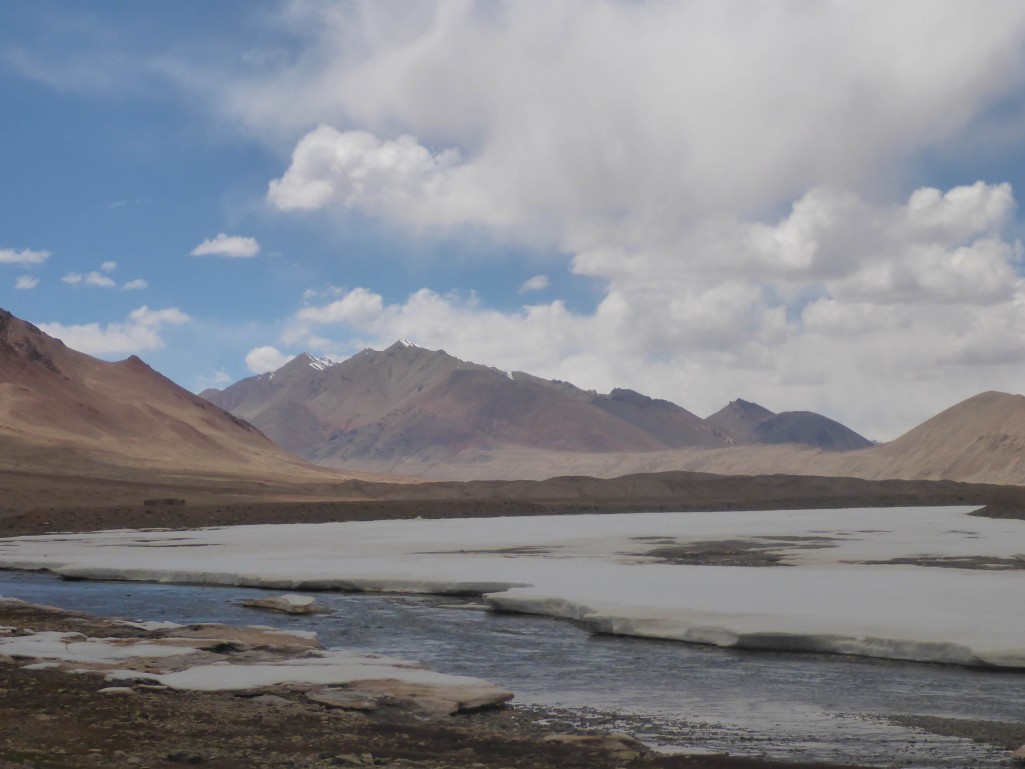
We’ve passed the turning to China now so there’s even less traffic, maybe 4 or 5 vehicles a day. All of them are packed full of people and have overloaded roof racks as transport is rare so has to be well utilised.
We get caught in a hail storm and shelter under a rocky overhang for some lunch while a shepherd and his son just turn their backs to the wind and pull their hats down hard.
After a day of changing colours the view is now becoming monochrome, red rocks and red dusty sand. If NASA faked the images from the Mars Rover then they probably did it here. We camp at 4277m and have to carry our bags off the road one by one, stopping for a few big breaths every 20m. Walking with low oxygen seems much harder than cycling but then we’re used to being out of breath on the bike.



The highest hill of the Pamir Highway awaits us the next day, the Ak-Baital pass. After a pleasant, steady start, the hill steepens up slightly in front of us and of course becomes unpaved. It’s incredible that someone lives up here but we’re glad they do as we can stop at some houses and buy bread. They think it’s incredible that two people are riding one bike.

It’s not that steep but we now only have 11.5% effective oxygen so we’re spinning the granny ring. Our lungs are working harder than our legs.

After a final, steeper gravel hairpin forces us to push a few metres we jump back on and ride to the top. We’re now 4655m above sea level and its likely that we’re the highest tandem in the world at that precise moment.



It’s a great feeling that’s short lived as the descent is another slalom effort dodging boulders and deep gravel. This levels out onto a 15km stretch of corrugated washboard that threatens to shake every bolt on the bike loose, as well as our teeth. It’s like riding the cobbles of Paris Roubaix on a pneumatic drill.


A Land Rover comes into view and pulls over next to us. Three Poles climb out armed with coffee, sandwiches and a bottle of Johnny Walker. Just what we need as energy and enthusiasm are running low and it’s not warm. It’s an unlikely meeting and we share a wonderful moment together by the side of this extraordinary road.

The road eventually improves and drops down into a bleak grey valley with huge imposing walls of rock.

We’ve been following a large barbed wire fence for a while now that was put up by the Chinese to mark what they see as the border, even though the actual border is 10-20km away. It’s an impressive construction but doesn’t seem to be observed or protected as there are dozens of holes and at one point an open gate.

Karakul is the largest lake in Tajikistan, formed by a meteorite impact and with a name that means black lake which is odd because it’s actually green.


We pull into a home stay in the village with the same name. As with the other Pamir villages, the houses are built from rough bricks, hand made on site and then rendered to cover up all the irregularities. In Karakul there is no mains power at all so our hosts have a small solar panel and try not to depend on it. Torches, candles, and a yak dung stove are much more reliable.
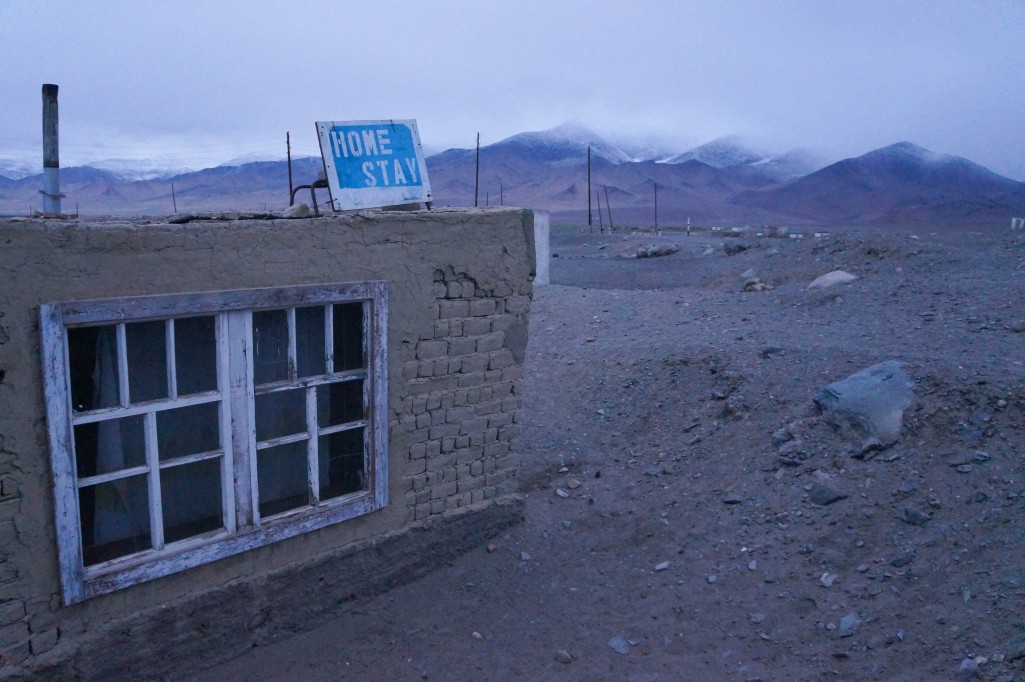

For some reason there are dozens of huge empty oil tanks dotted around the streets, in amongst piles of rubble, sometimes with a stray dog keeping watch. This place makes Murghab seem like a busy metropolis.
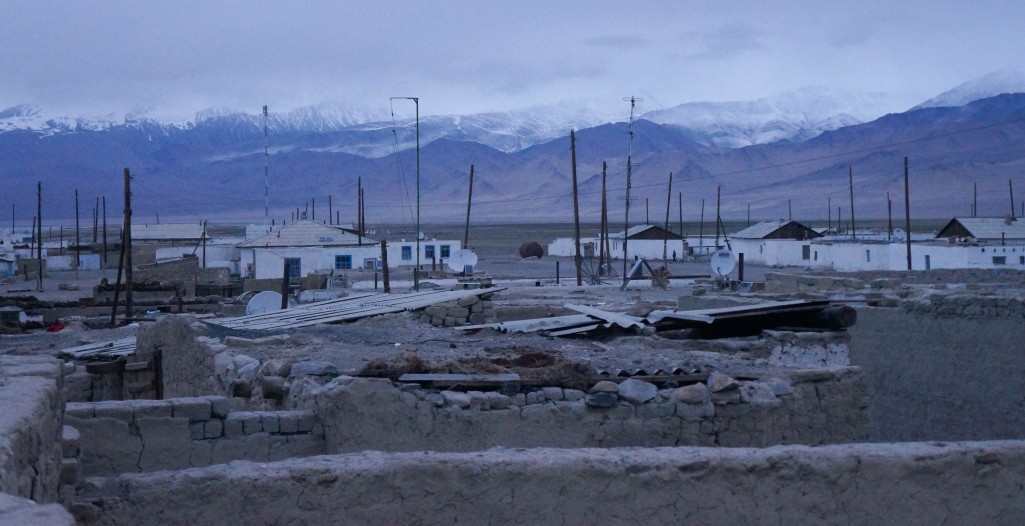
In the morning we’re shown to the village ‘shop’. A grumpy old women hobbles out of her house and leads us to her garden shed which displays a couple of packs of noodles, a pair of shoes and a few tins of condensed milk. We decide our supplies of creamy shoe noodle soup will be adequate for the next couple of days so leave with nothing, making the women even more grumpy. We do however collect water from the well then get on our way.

There’s a light snow flurry and a blanket of clouds sits on the mountains behind the lake which deprives us of the classic Karakul view of big mountains reflected in the green water which is a shame.

We have the 4232m Uy Buloq pass to get over next which starts steadily then kicks like a donkey three times before the top requiring some brute force and stubbornness to reach the top. Then we drop down into nowhere.

Suddenly we feel incredibly small. The road and the Chinese border fence are almost lost in the jumble of rocks and boulders on either side. The clouds are still hanging low but we glimpse the hulking outline of Trapez Peak towering us, over 6000m high. The wind is blowing hard against us and there’s snow in the air again so we make use of the only shelter available beneath a small bridge for lunch and pull on our down jackets.

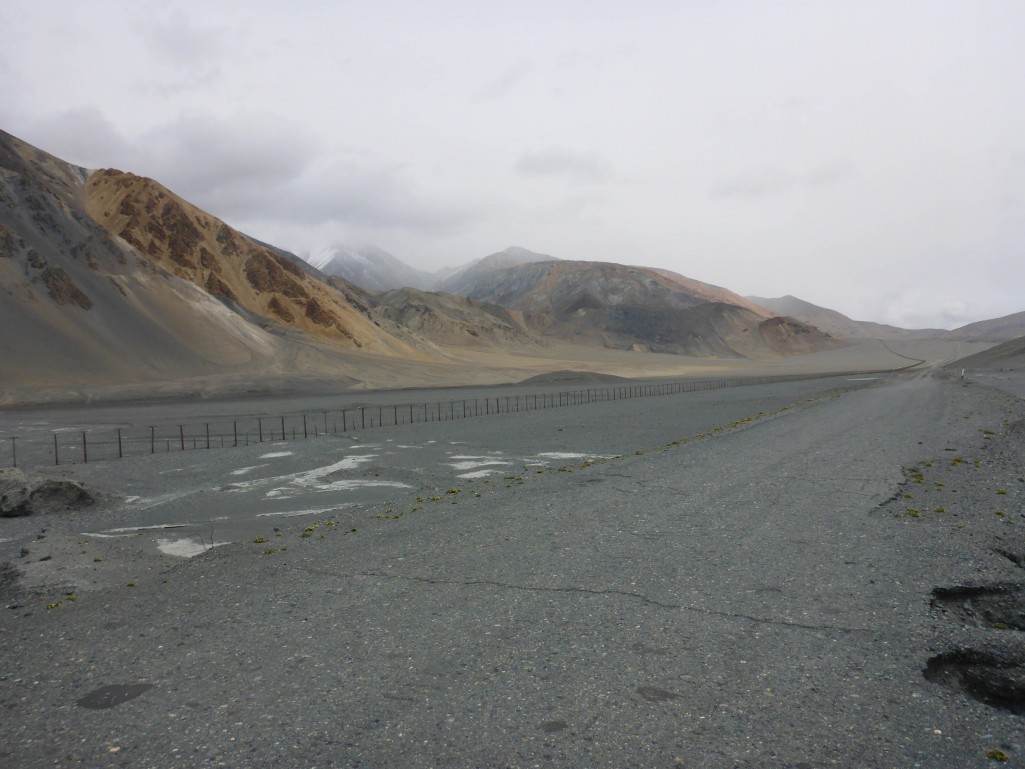
Once we emerge to find the situation hasn’t improved so the jackets stay on and predictably the road surface deteriorates to the hated corrugated wash board. We battle on one pedal stroke at a time, then the rough road begins to climb for the final pass before the border.
We’re relieved when we get to the rusty barrier near the top, held closed with what looks like a coat hanger. There’s not a single person to be seen even when we call out Hello! Salem! Zdravstvuj! and honk the horn. We decide to get out of the cold and wait in the warm guards office where a big pot of mutton soup is on the boil but resist tucking in. Still no-one comes.

20 minutes later we decide to get going so grab the bike and push it past the gate, at which point two men emerge, wiping sleep from their eyes, from a building that looked abandoned and point us further up the road. Behind a half built garage there’s a Portacabin surrounded by mud which serves as the border control point. A man in camoflage gear takes our passports and we feel the warmth from the open fire as he disappears inside the office with a firm ‘Nyet’ when I try to follow him. We have to wait in the cold it seems.
The passports come back with the necessary exit stamp and our names have been added to yet another big exercise book. We still have 100m of climbing before the actual border line and then 10km of descent before the Krygyz entry point. It’s gone 5 o’clock, the snow is getting heavier and the road conditions are getting a lot worse.

Once over the top of the 4336m Kyzl Art Pass we’re faced with a slippery, muddy, boulder strewn excuse for a road. Trying to control over 200kg of tandem crew and kit on two rubber contact points barely bigger than a matchbox takes some precision braking, careful weight distribution and some extraordinary faith from Kirsty that I can keep us upright. A blizzard in the face only adds to the challenge.
We make slow progress but part way down a farm emerges out of the gloom with a farmer and his kids beckoning us in. We don’t need to be asked twice and quickly park the bike and make for the cosy living room. Inside there are 4 children, a small baby in a cot, 2 sets of parents and a grandmother. We take on the role of kids entertainment for the next couple of hours while we defrost. They’re fascinated by their strange house guests.

The cosy living room is also the cosy kitchen, cosy dining room and by the end of the evening is converted into the cosy bedroom for all of us. One room to heat means less fuel needed although there is a good size fuel production facility outside in the form of a herd of yaks.

It’s been Ramadan for most of our time in the Pamirs but we haven’t really been affected much. However here the Grandmother is observing it so out of respect we all wait until the sun has set before dinner is served: a simple soup with bread followed by chai and with the chai being used to swill out the soup bowls. Another man pops in and wolfs down a bowl of soup, offers us a lift to Osh (thanks but no thanks) then gets going again.

After dinner the floor is covered with mattresses and bedding and then sleeping bodies but the light stays on all night so that the baby can be fed.
At 3am we’re woken by the grandmother having her breakfast, then the baby having hers. The rest of us wait until 9am before eating, including a bowl of yak butter tea which is as appetising as it sounds, then we settle the bill and continue our descent. It was a wonderful refuge in no mans land and once again we’re left wondering about the severity of living so high on the mountain and so far from any other houses.

Kirsty had been feeling grotty the day before which was not helped by the weather and climbing. Today I seem to be suffering too. Luckily the weather has improved so we can now see where we’re going and the road seems a touch drier.

We pick our way down and down until the road levels out but there’s still a few km before we actually get to the Kyrgyz border. We must have spent 18 hours in no mans land and hope that the border guards don’t notice that our exit stamp was from the day before.
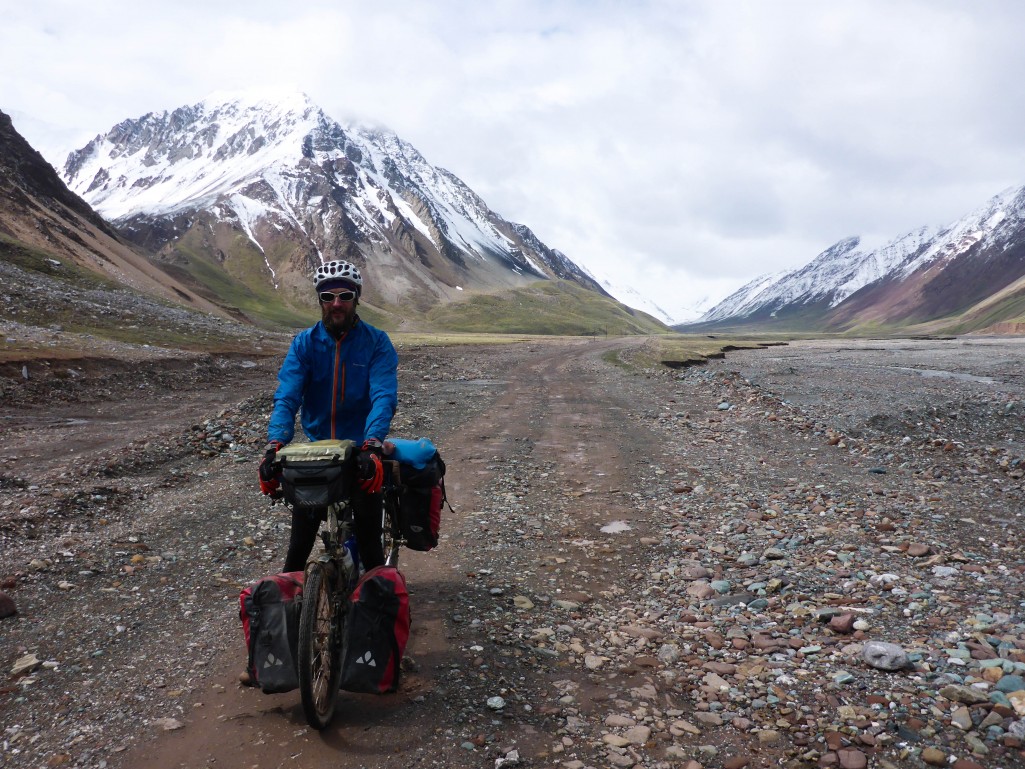
Of course they don’t, and we’re quickly through the basic control point and another stamp is added to the pages of our now very busy passports. We ride on and the mountains give way to wide, flat, grassy fields dotted with yurts, herds of horses and kids on donkeys. As much a stereotypical view of Kyrgyzstan as we could wish to expect. Another row of mountains sits in front of us but before we get to them we arrive in Sary Tash feeling exhausted, unwell and in need of rest so we check into a guest house and write off the rest of the day in favour of sleep.


Although officially the ‘Pamir Highway’ ends in Osh it feels like we have finished the hardest bit. Did it meet our expectations? After thinking about something for so long and waiting and longing for it to happen it’s always a bit strange when it’s over. In this case there is still so much for us to look forward to for the rest of the trip but even so having finished this section it’s hard not to feel a sense of completion. It was a difficult, beautiful, remote, frustrating, fascinating, humbling road that we feel privileged to have been able to ride. Will it be the best road though? Ask us again when we’re in Christchurch.






